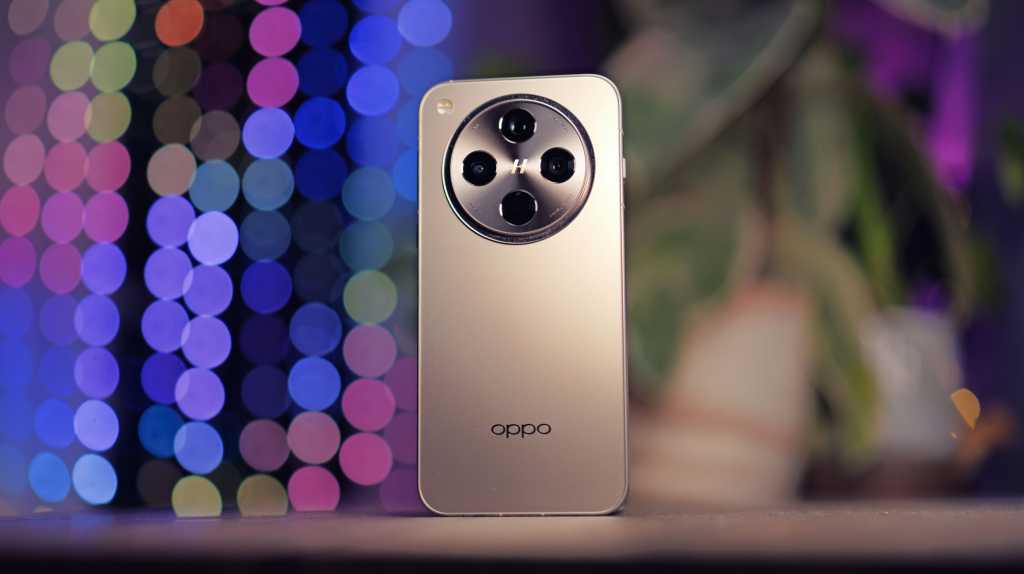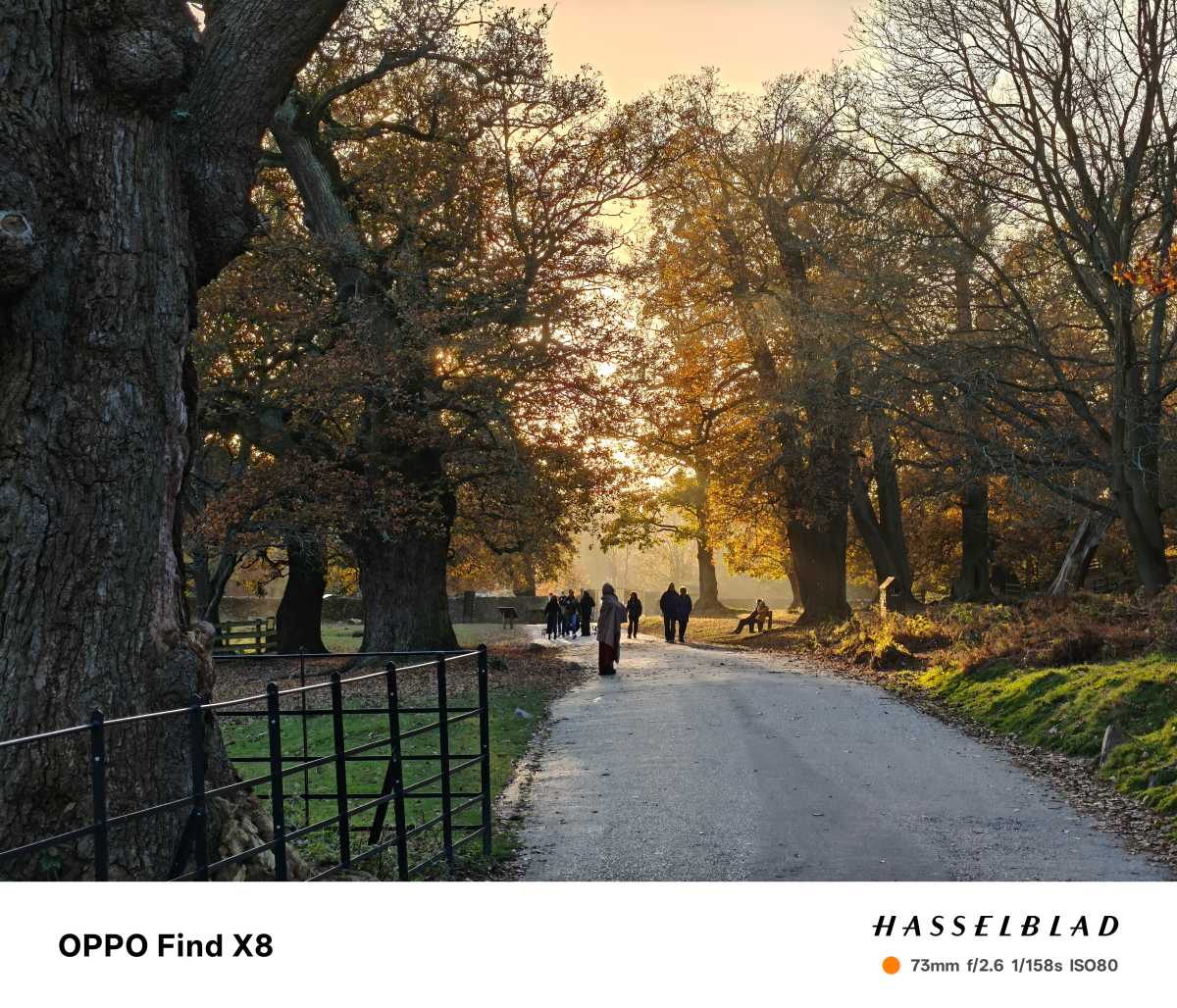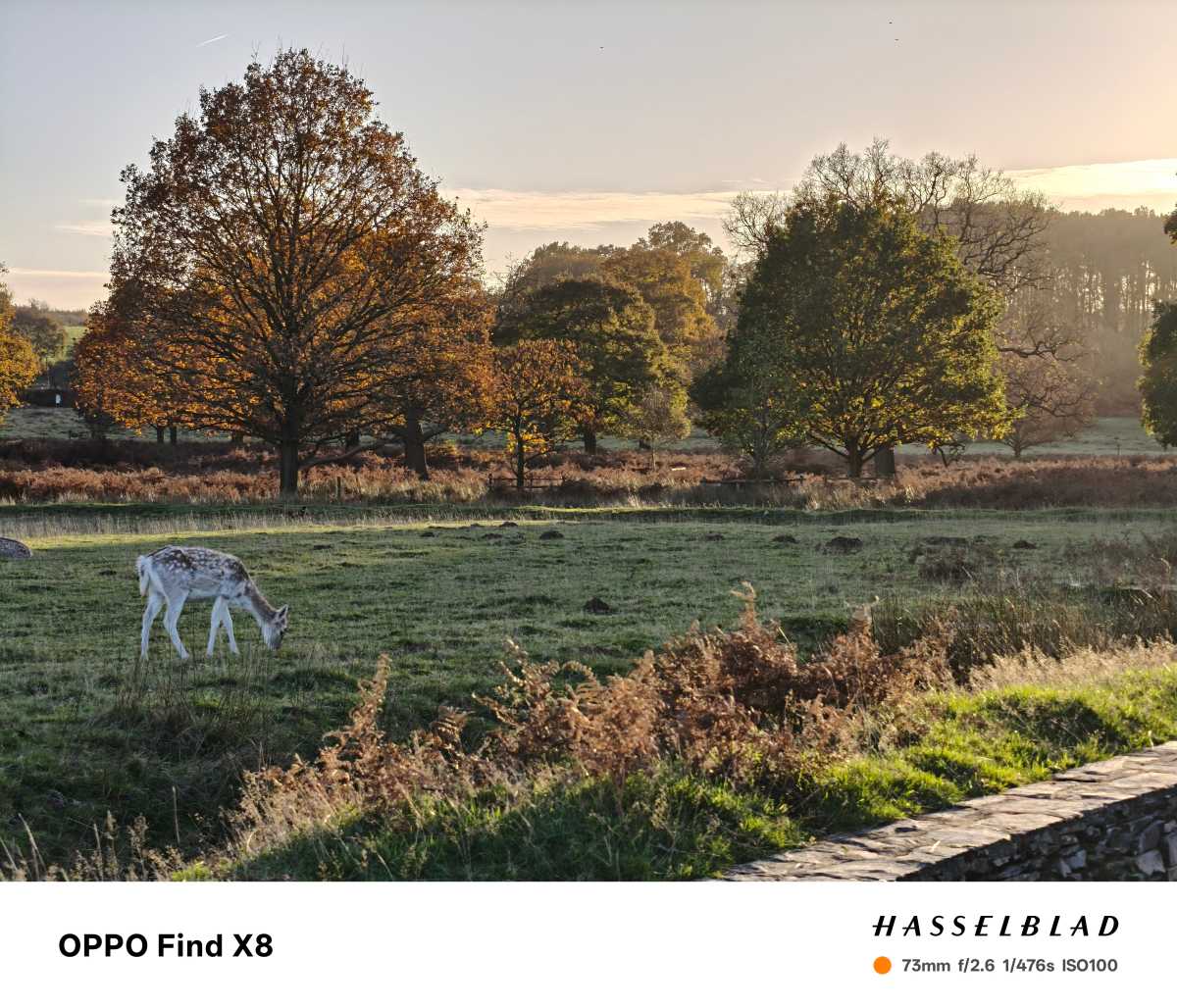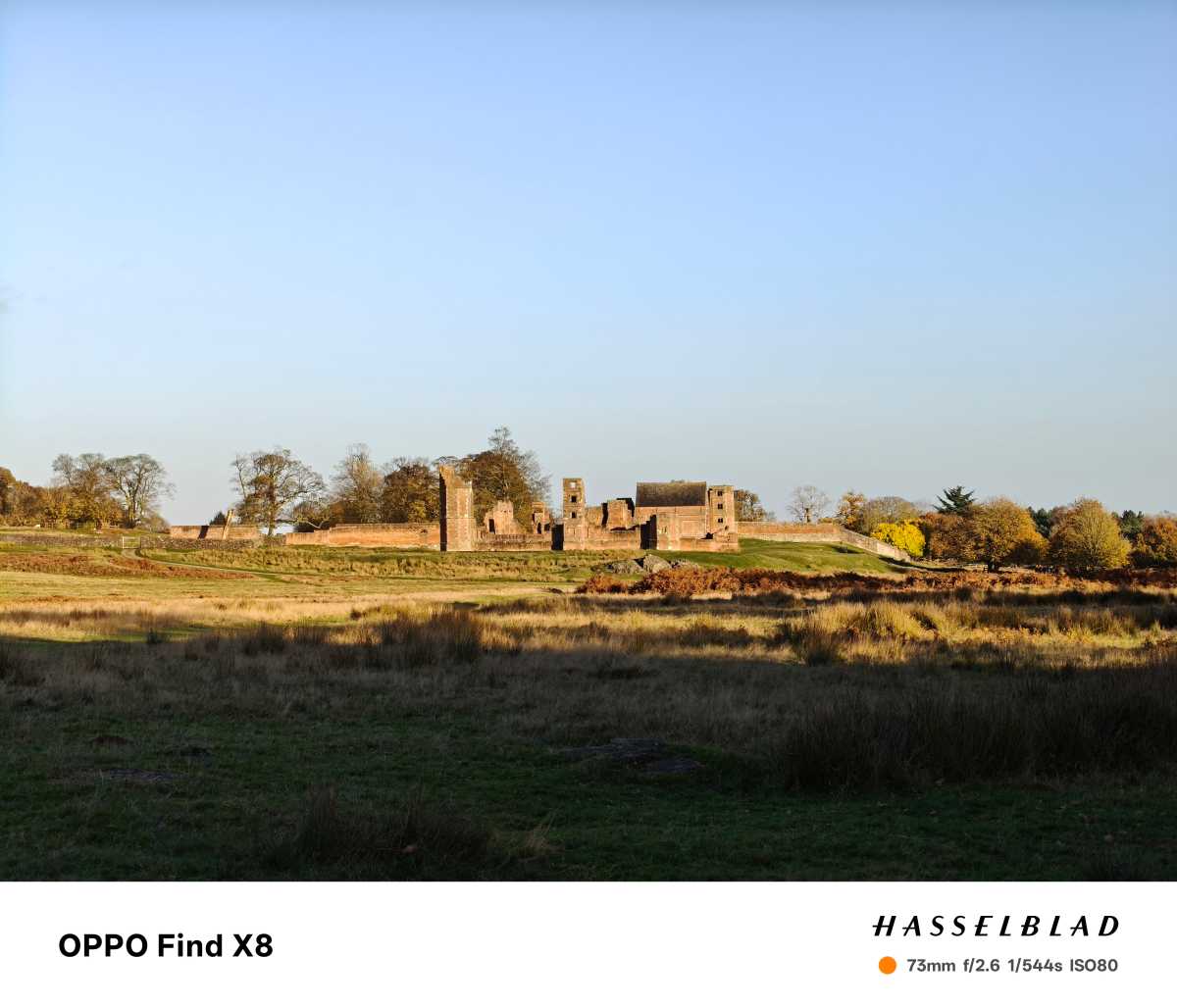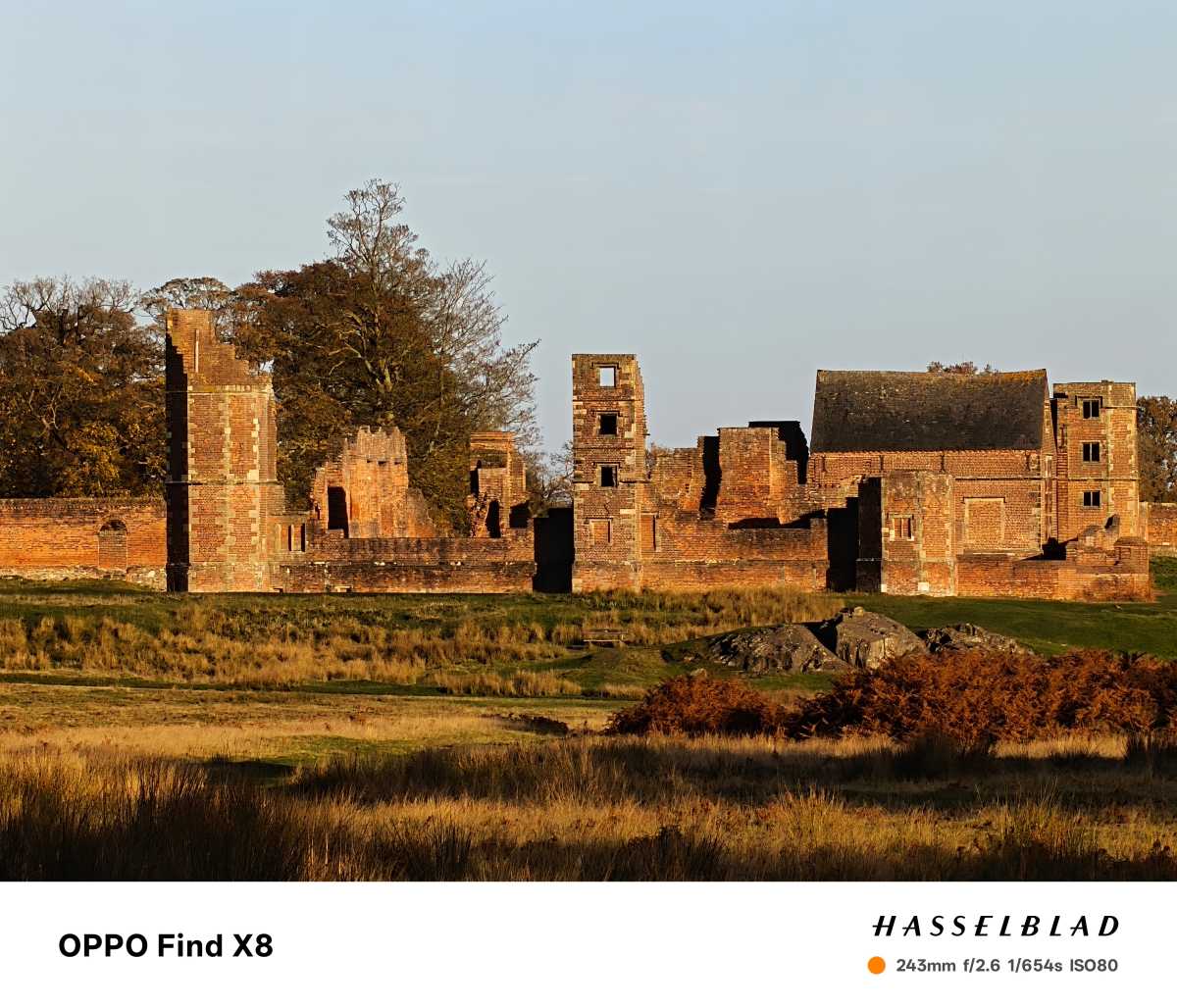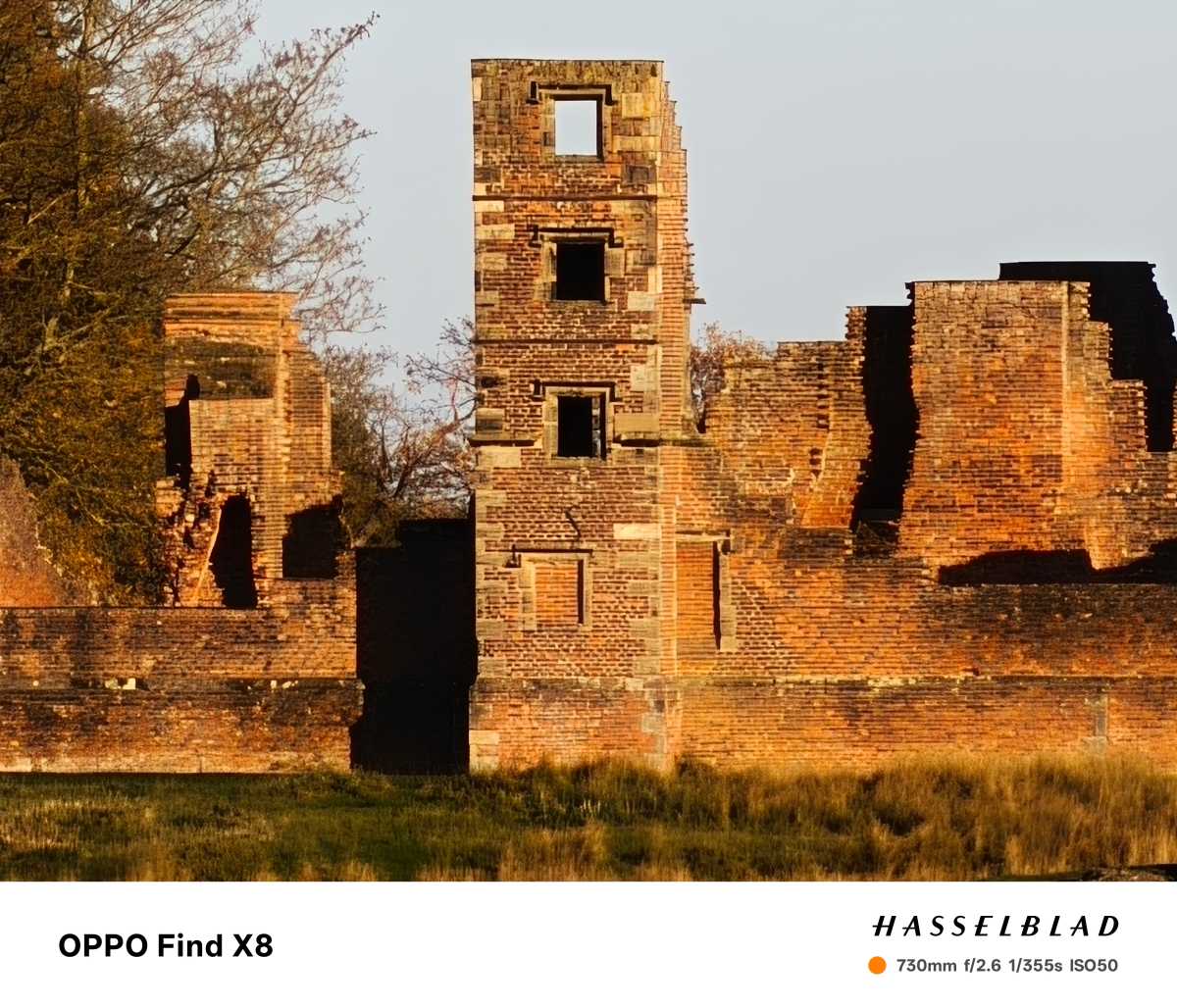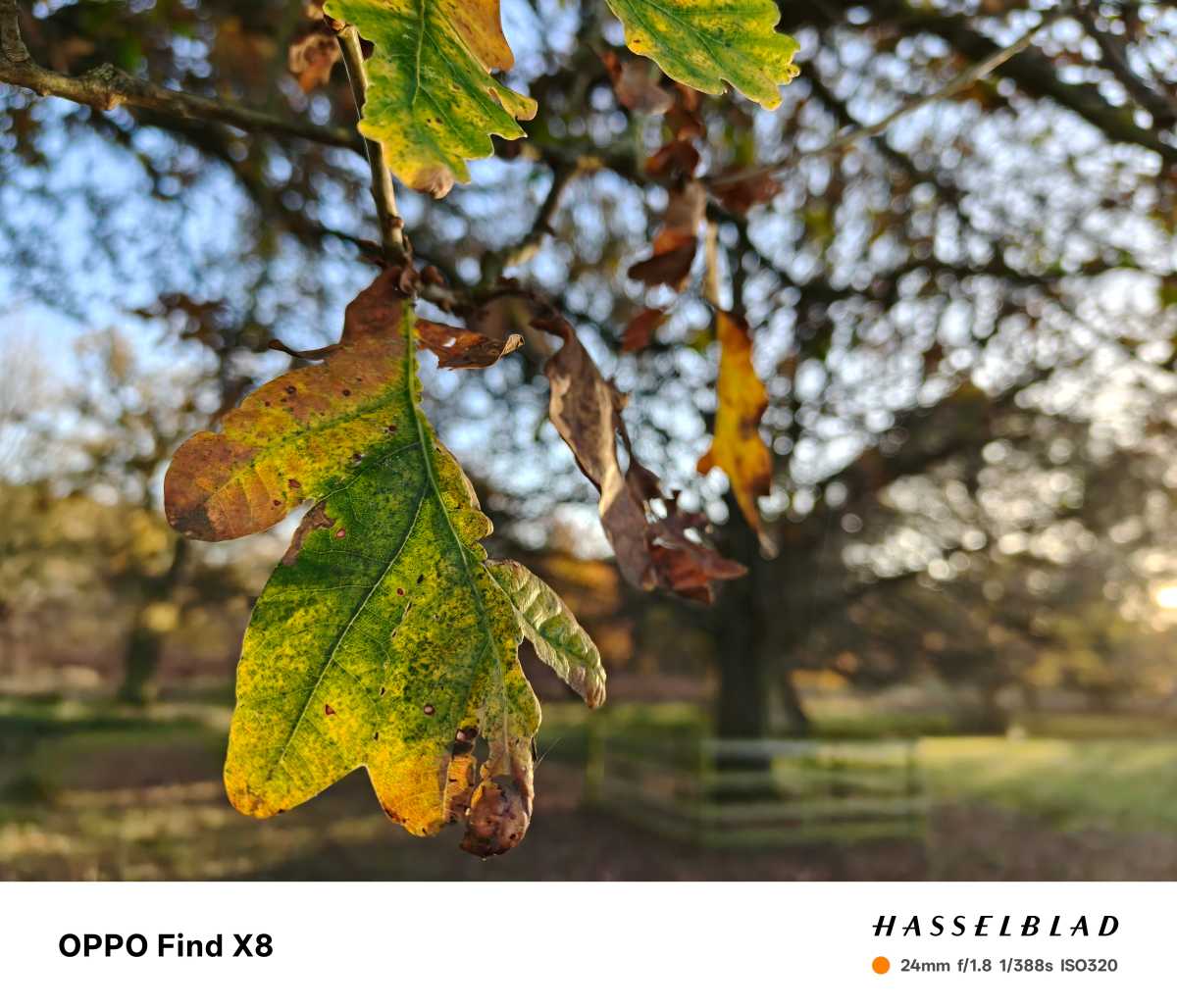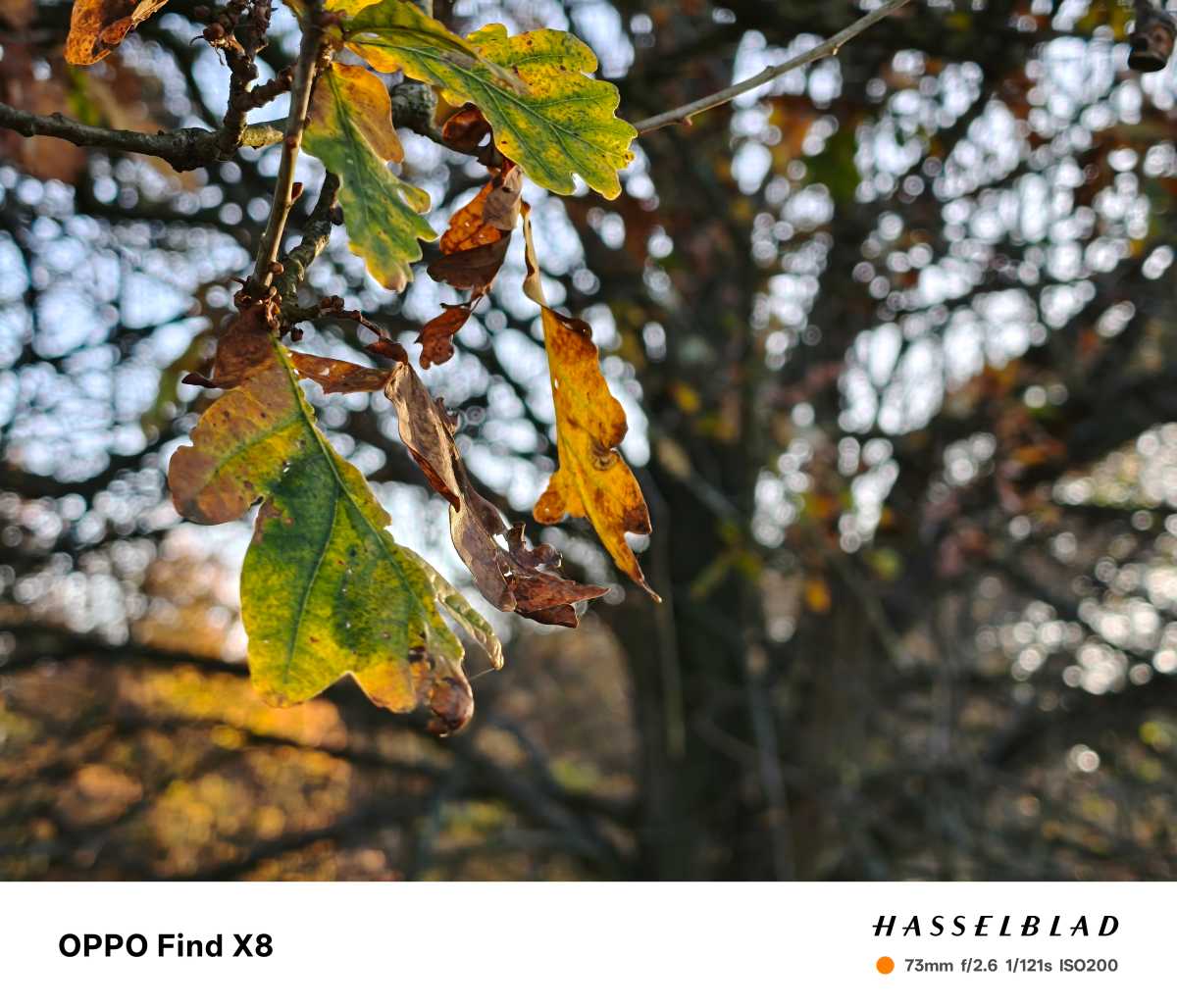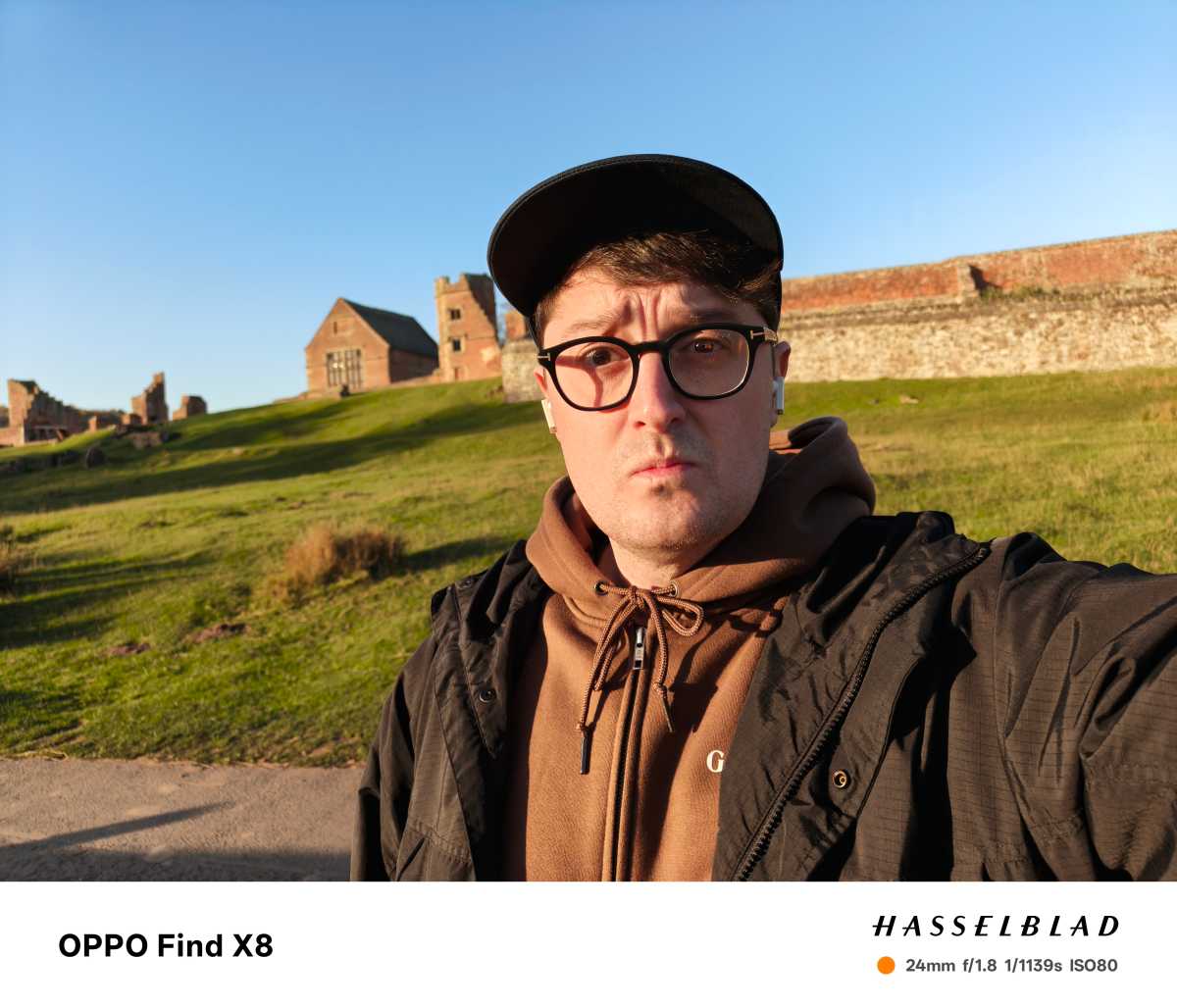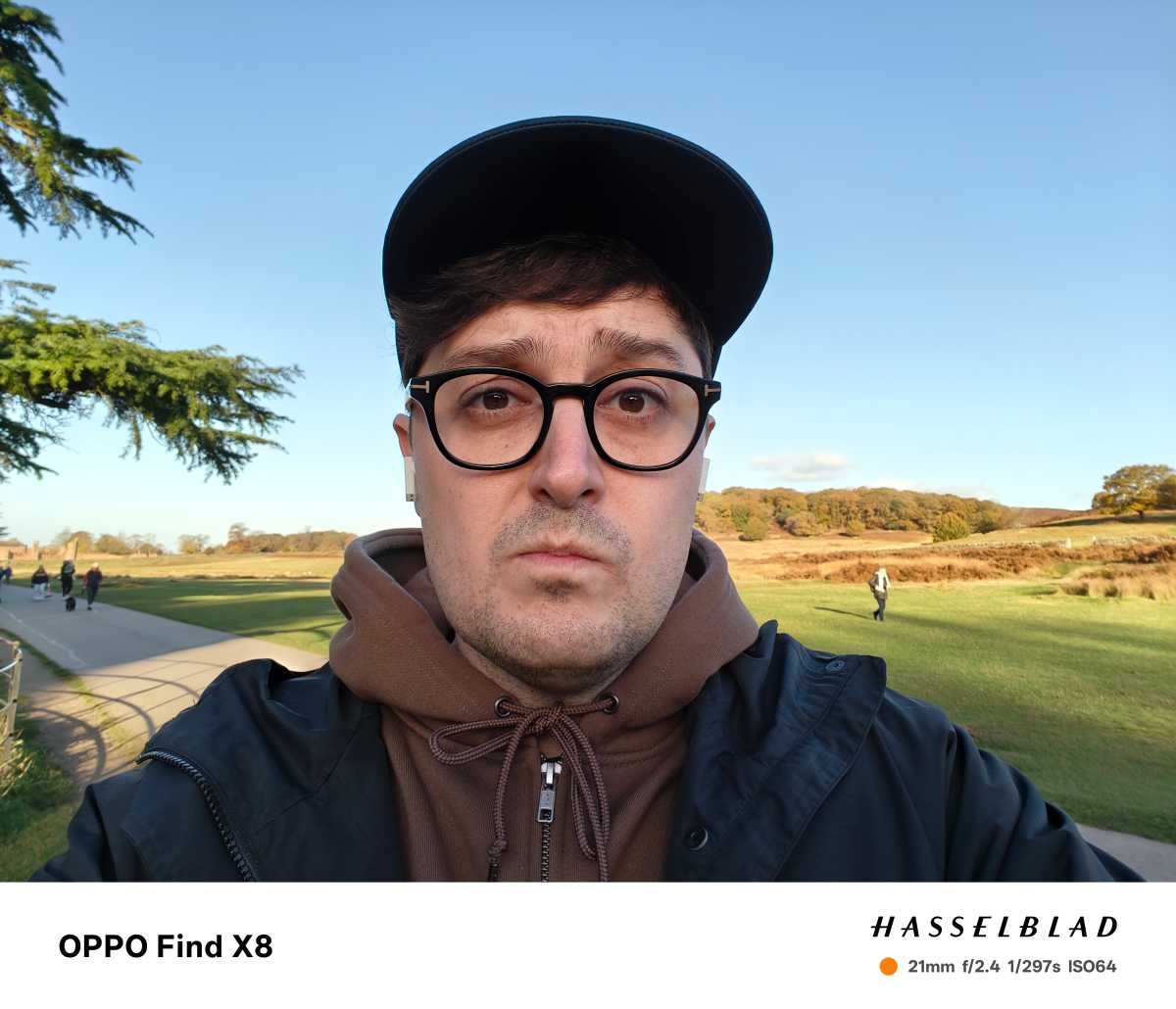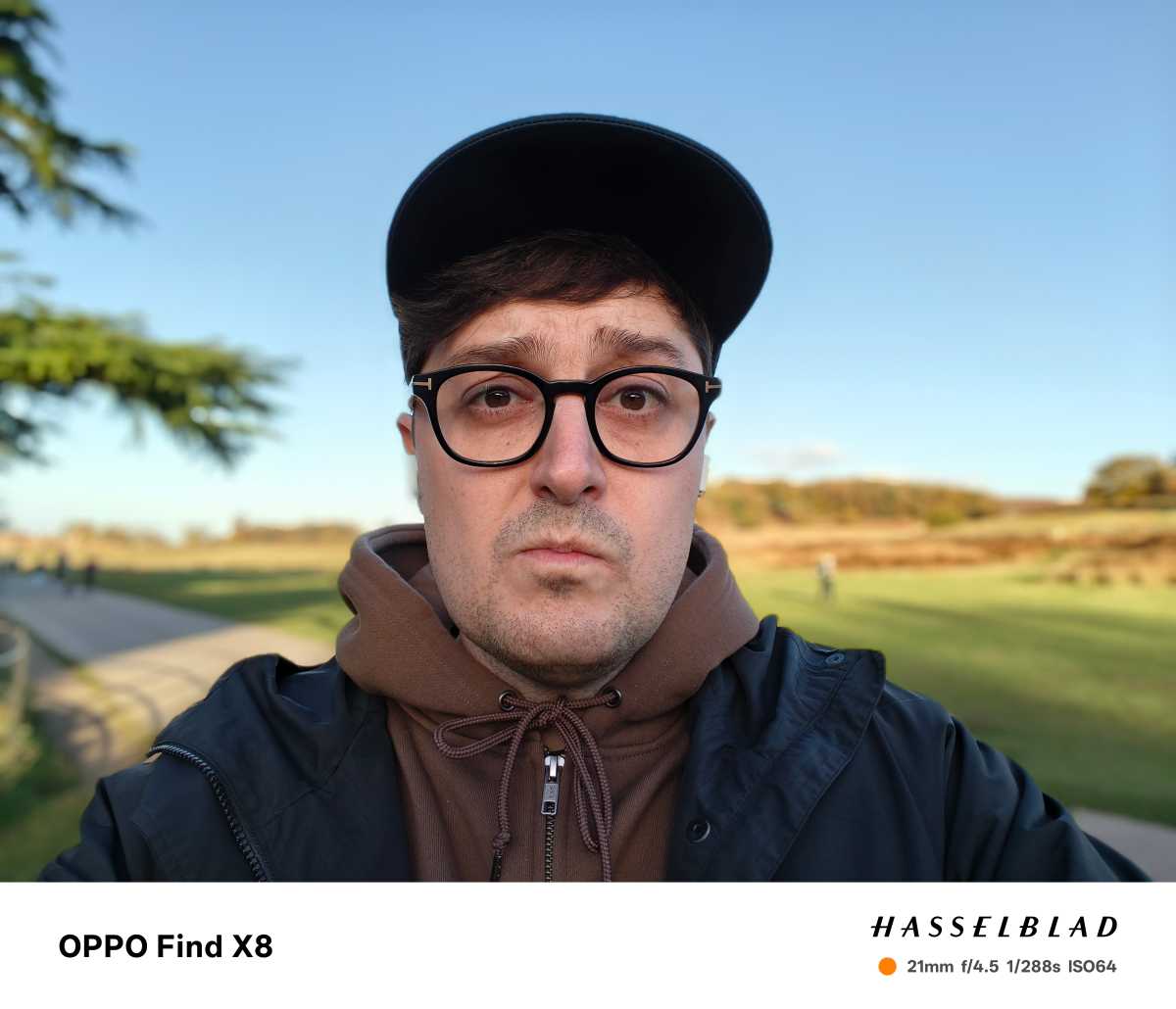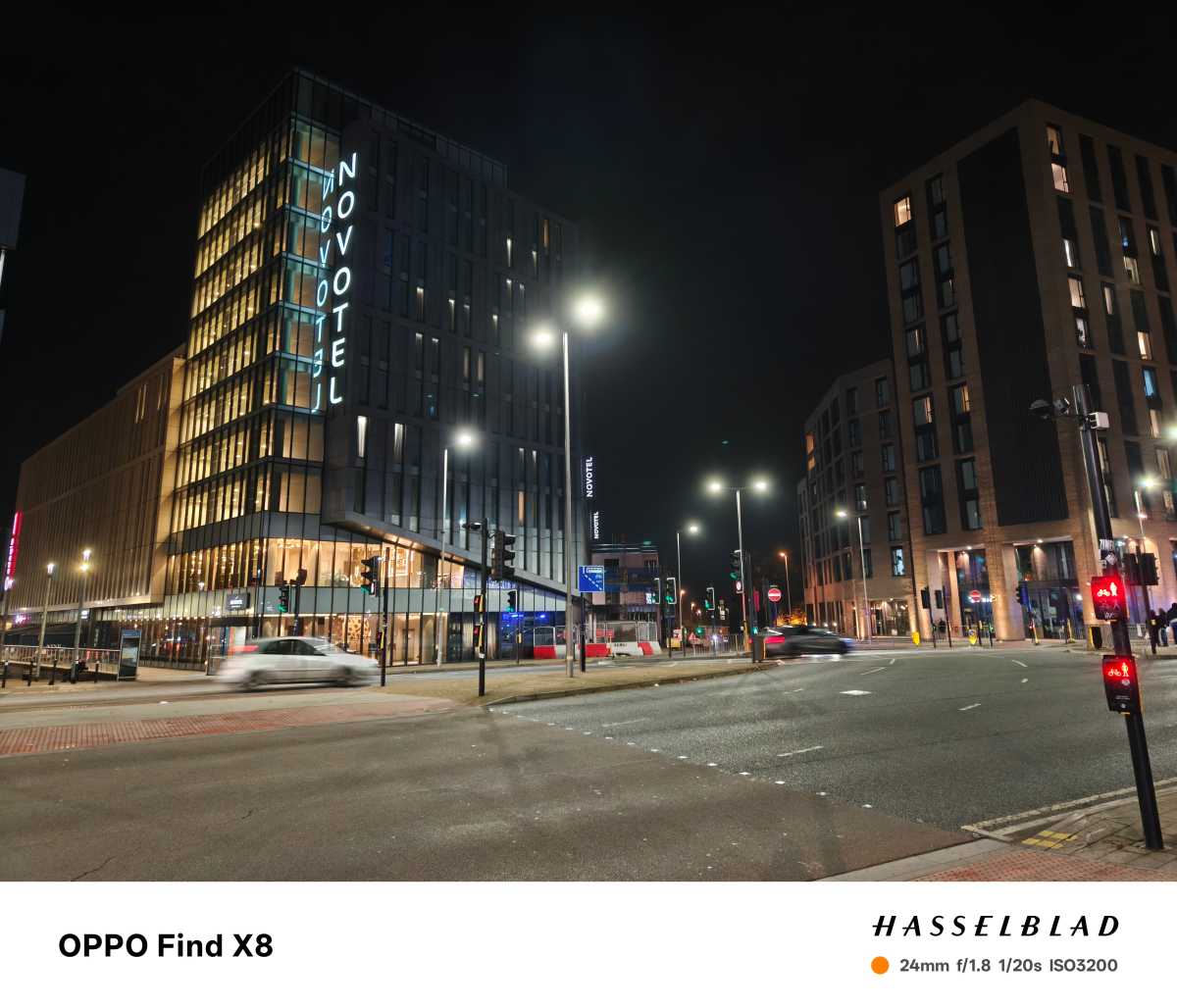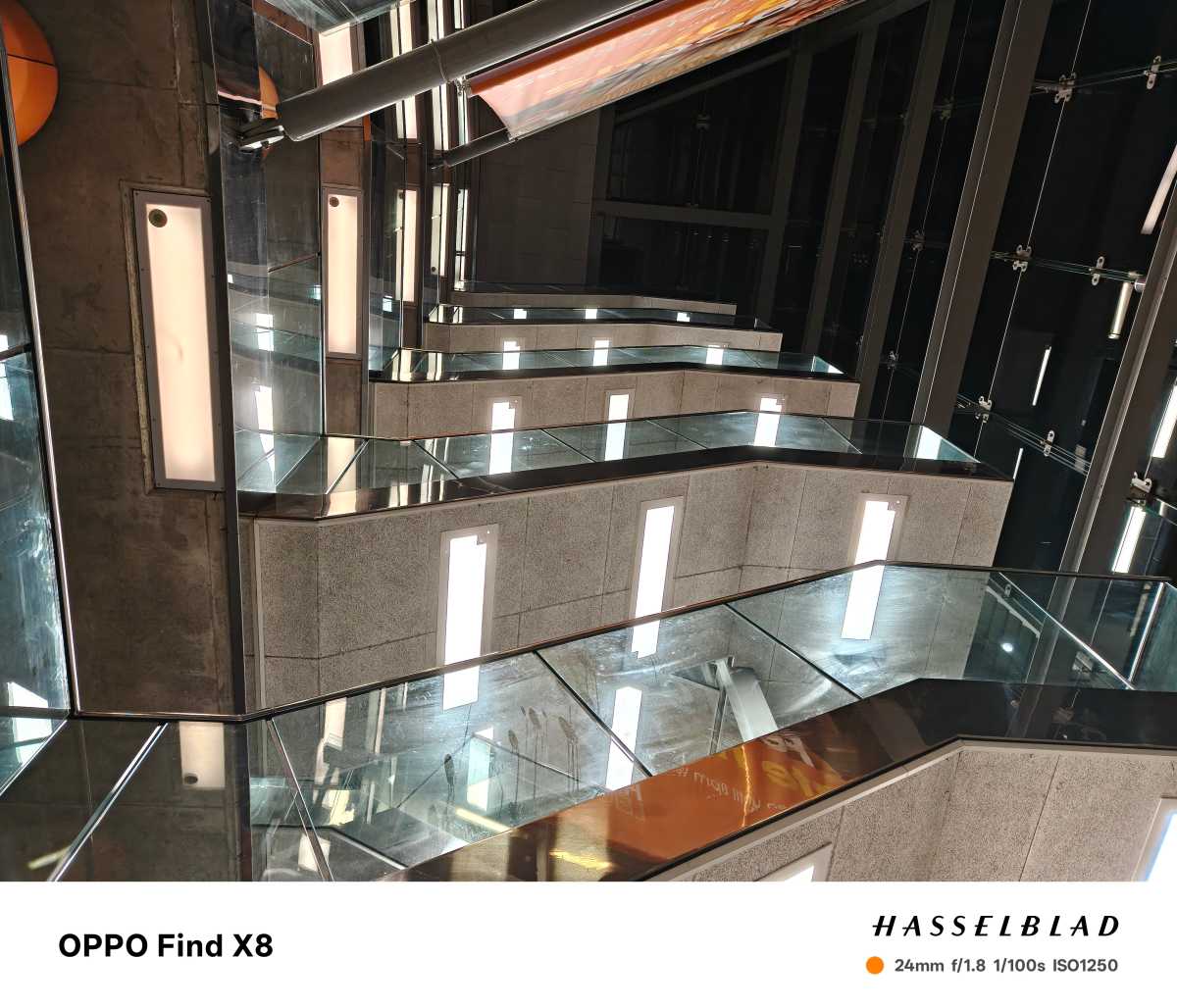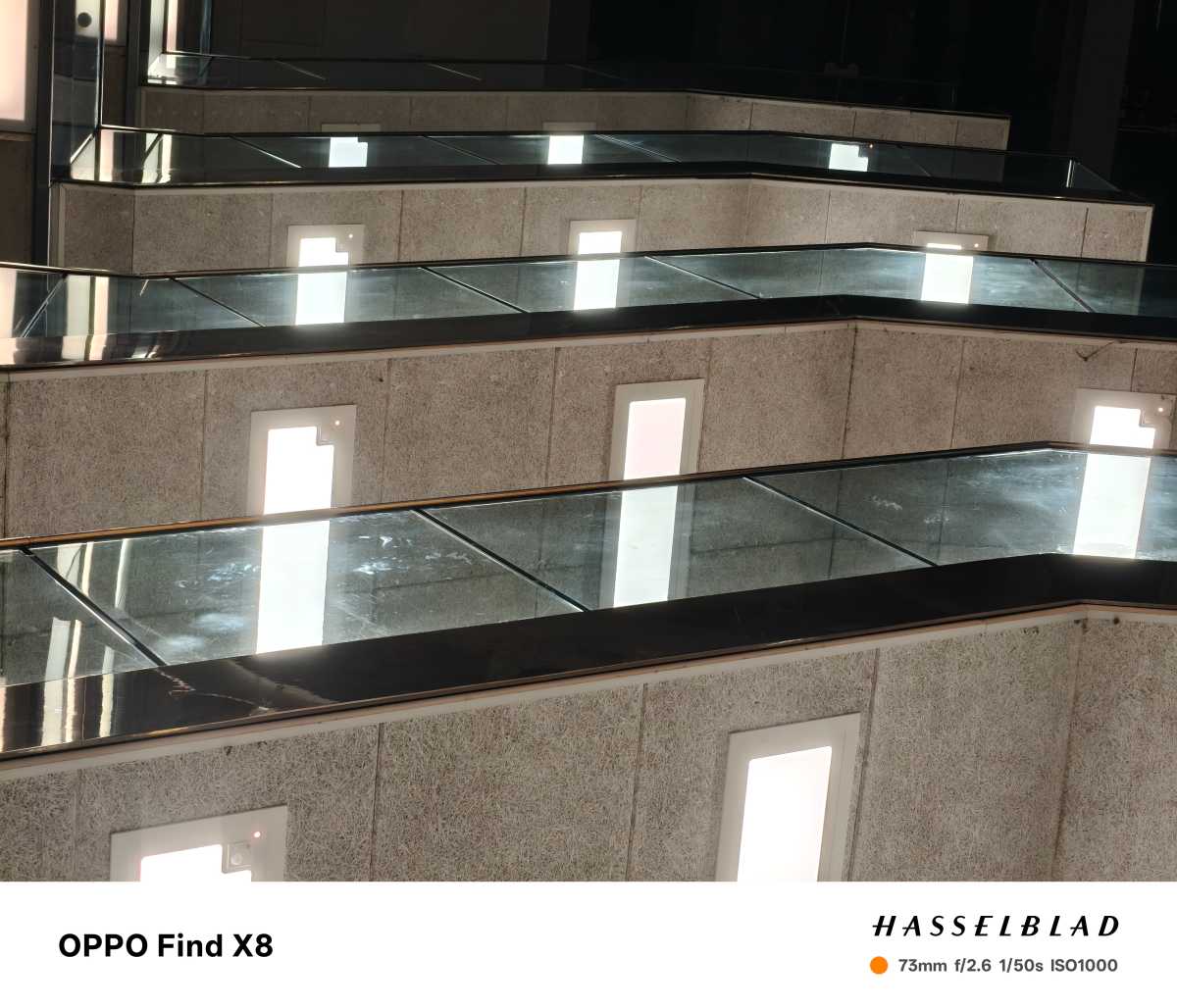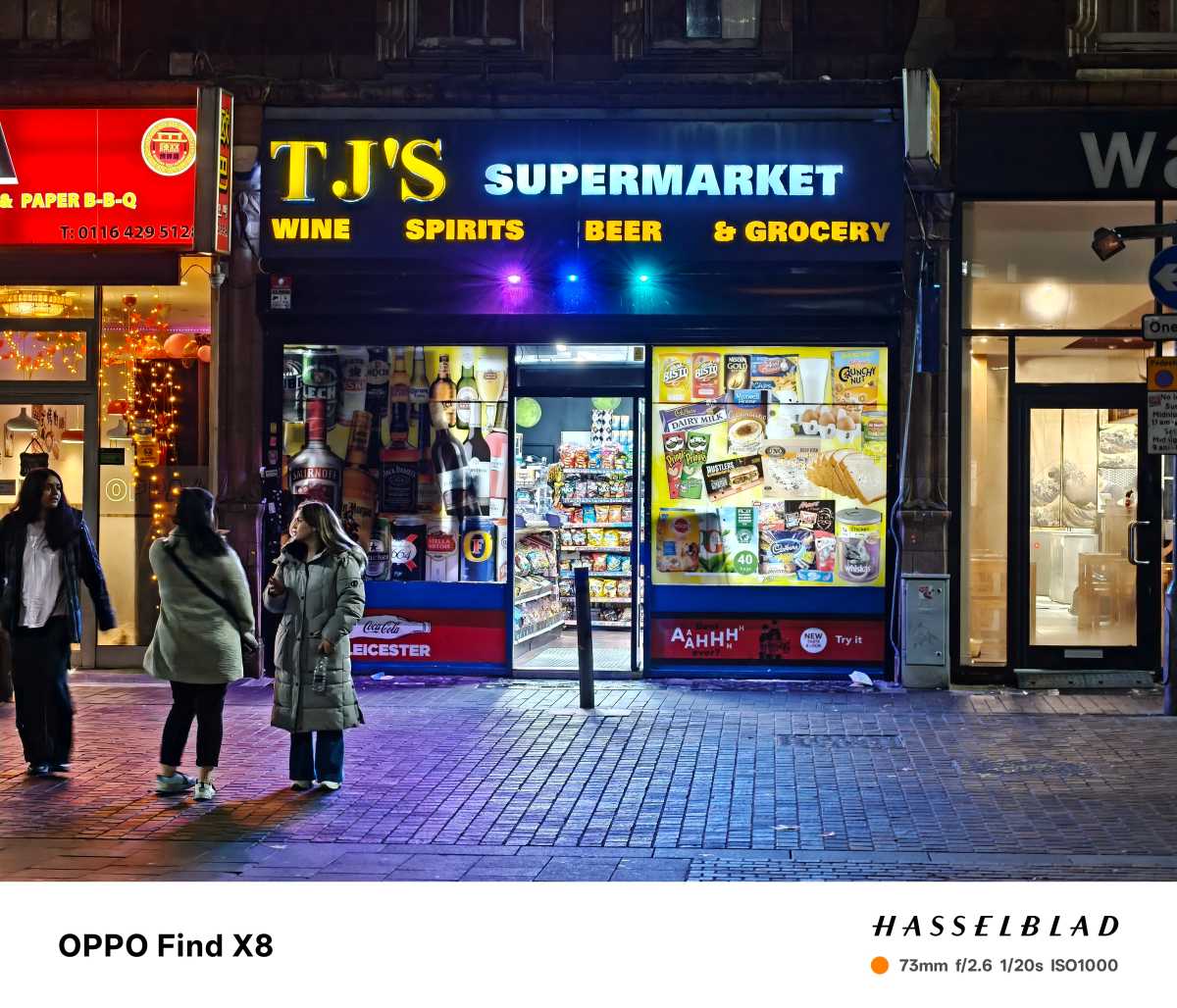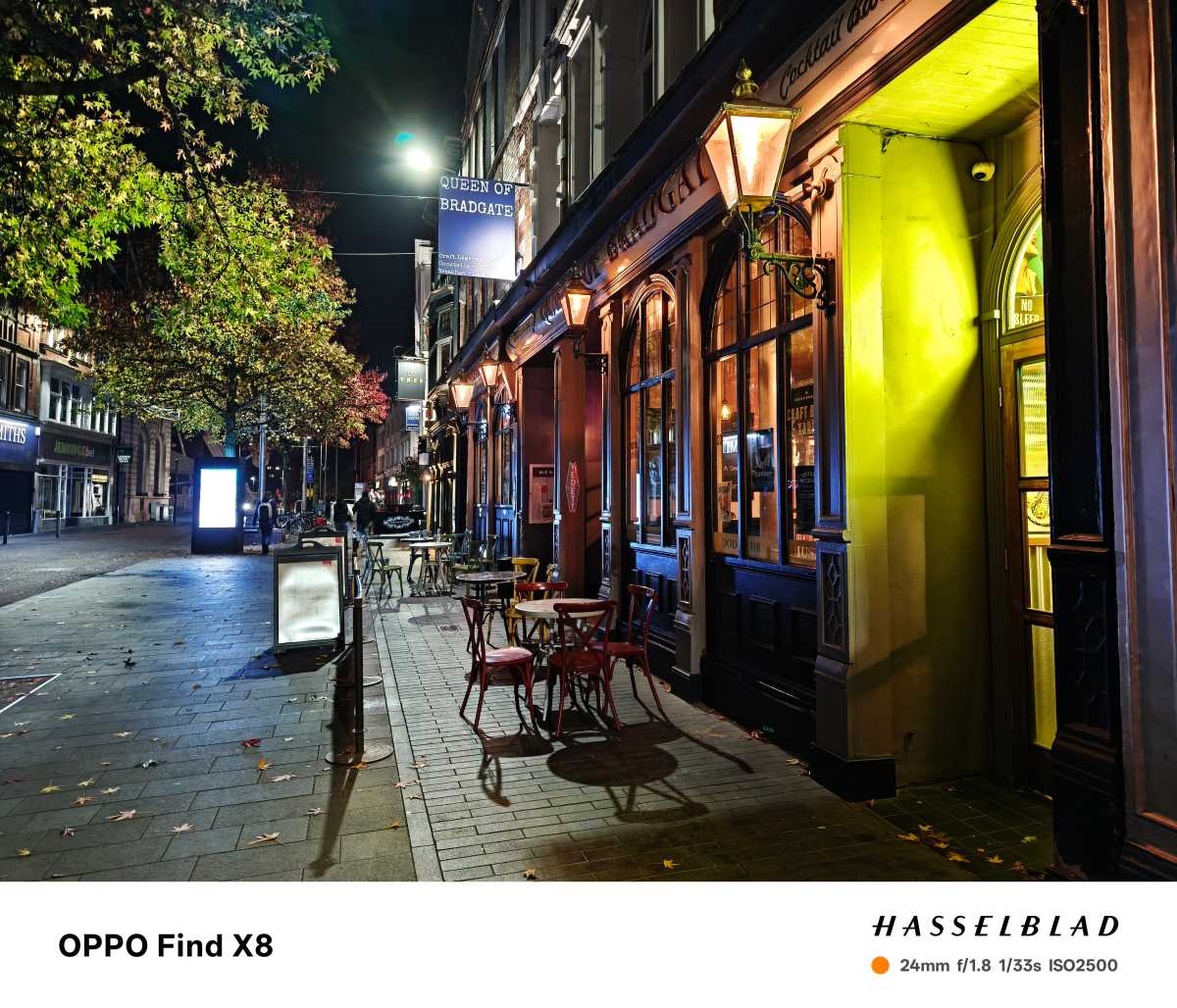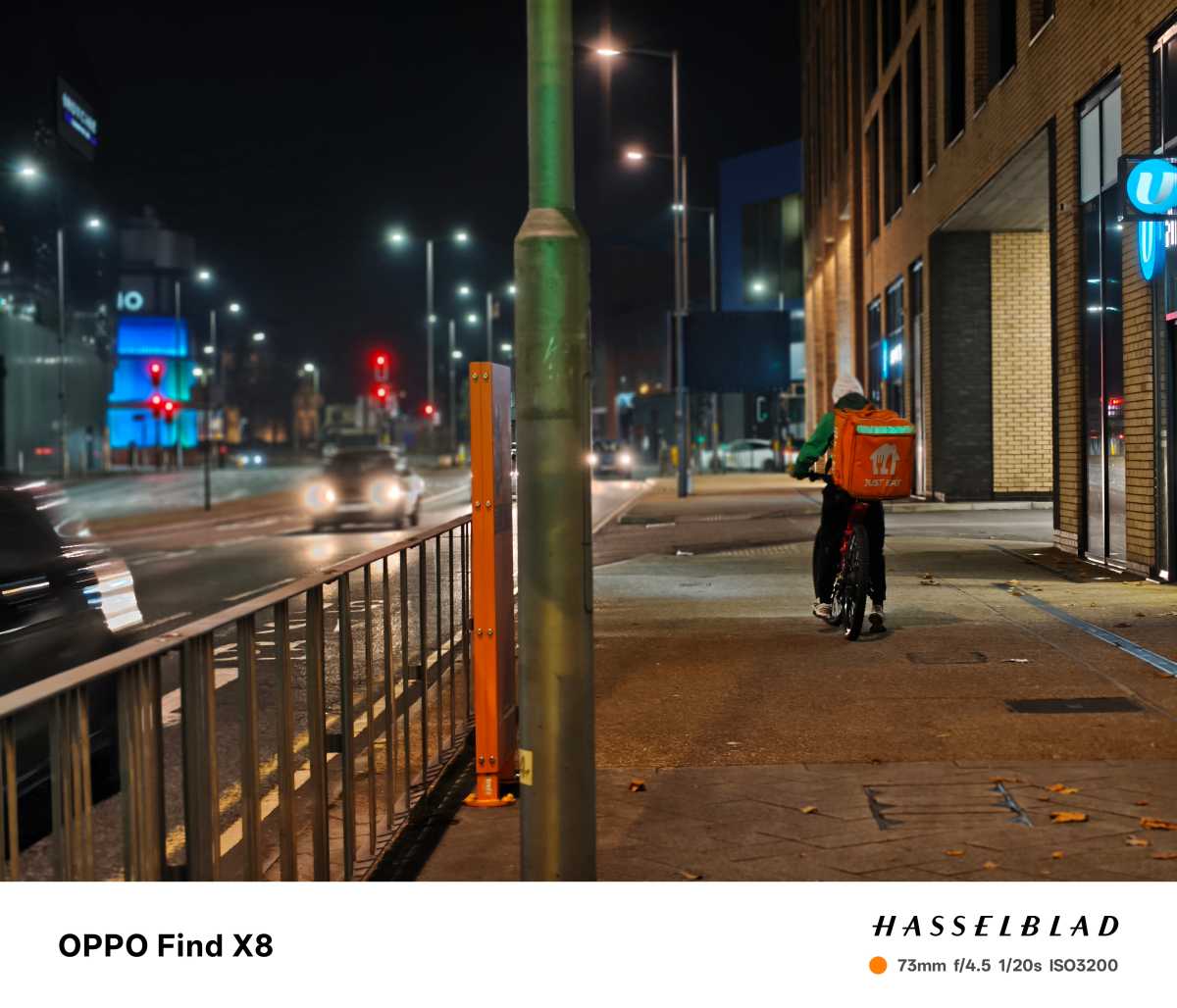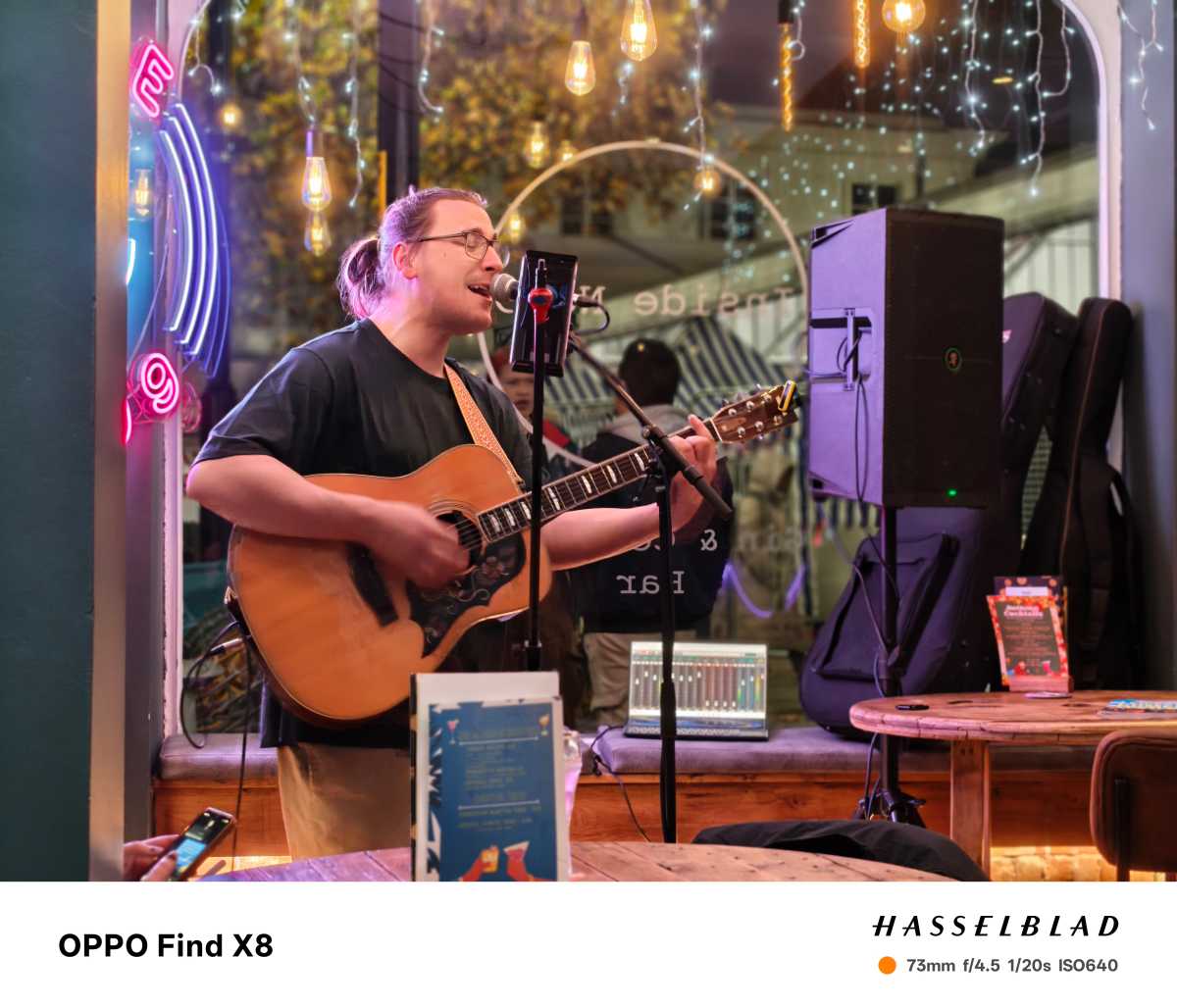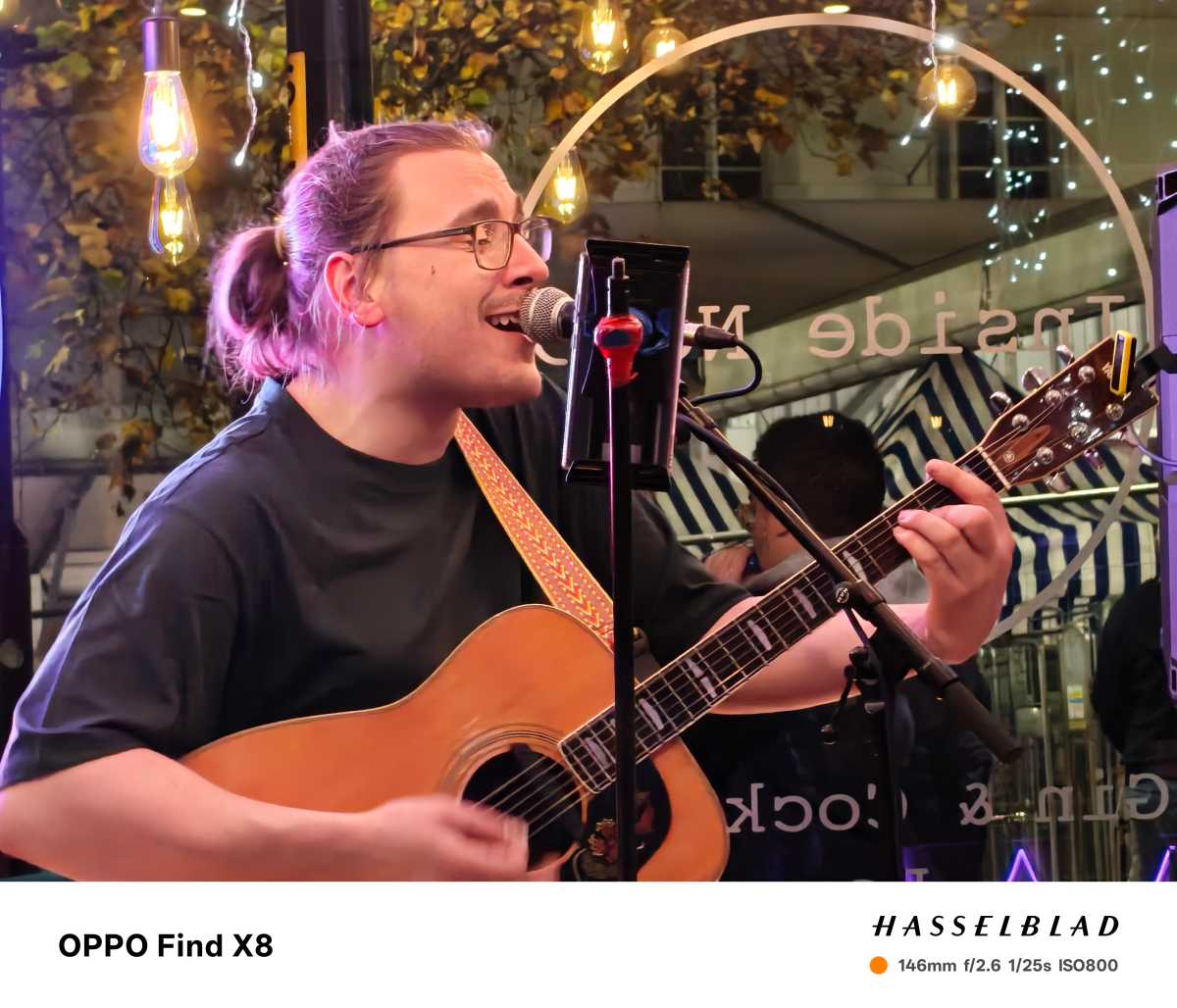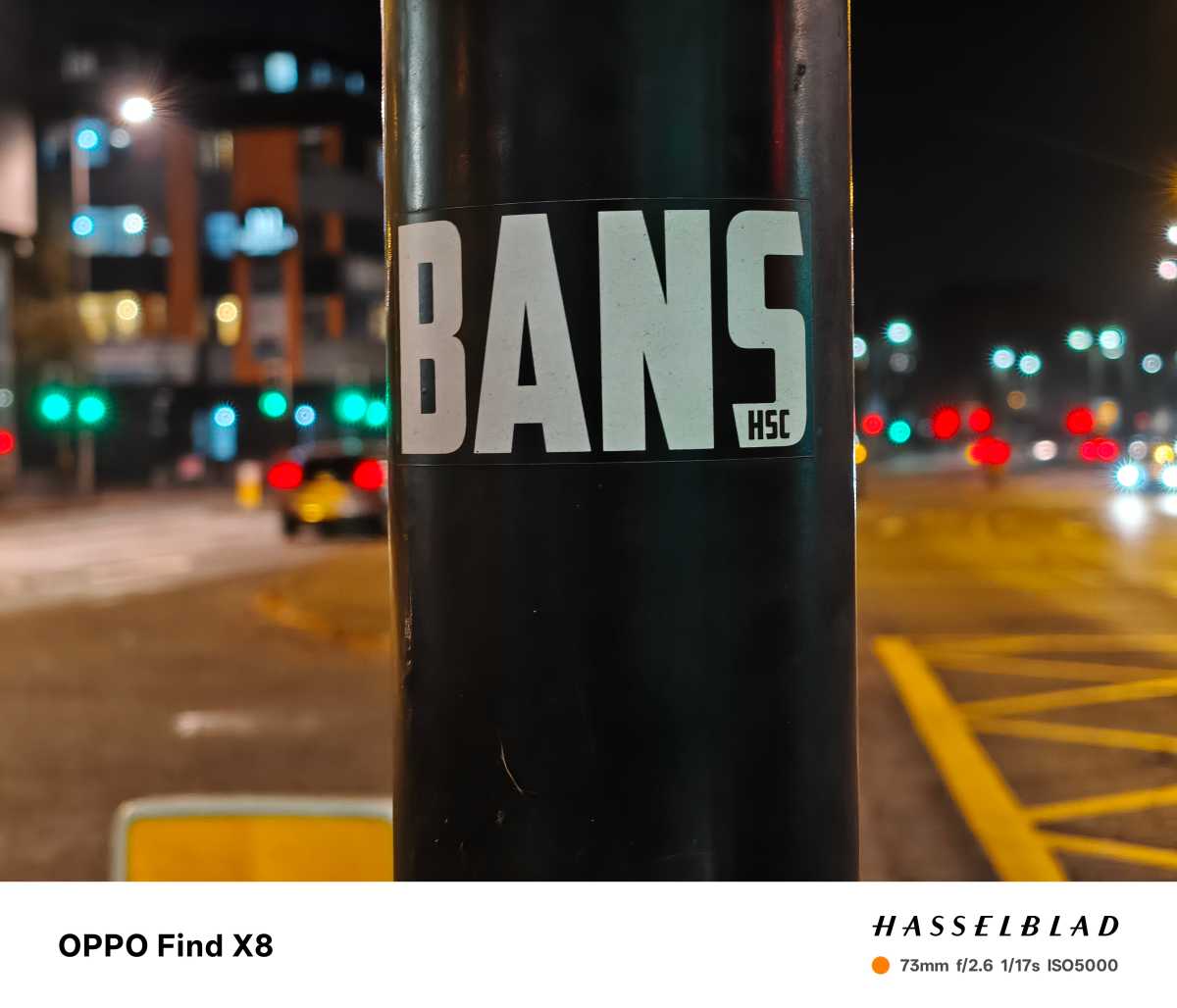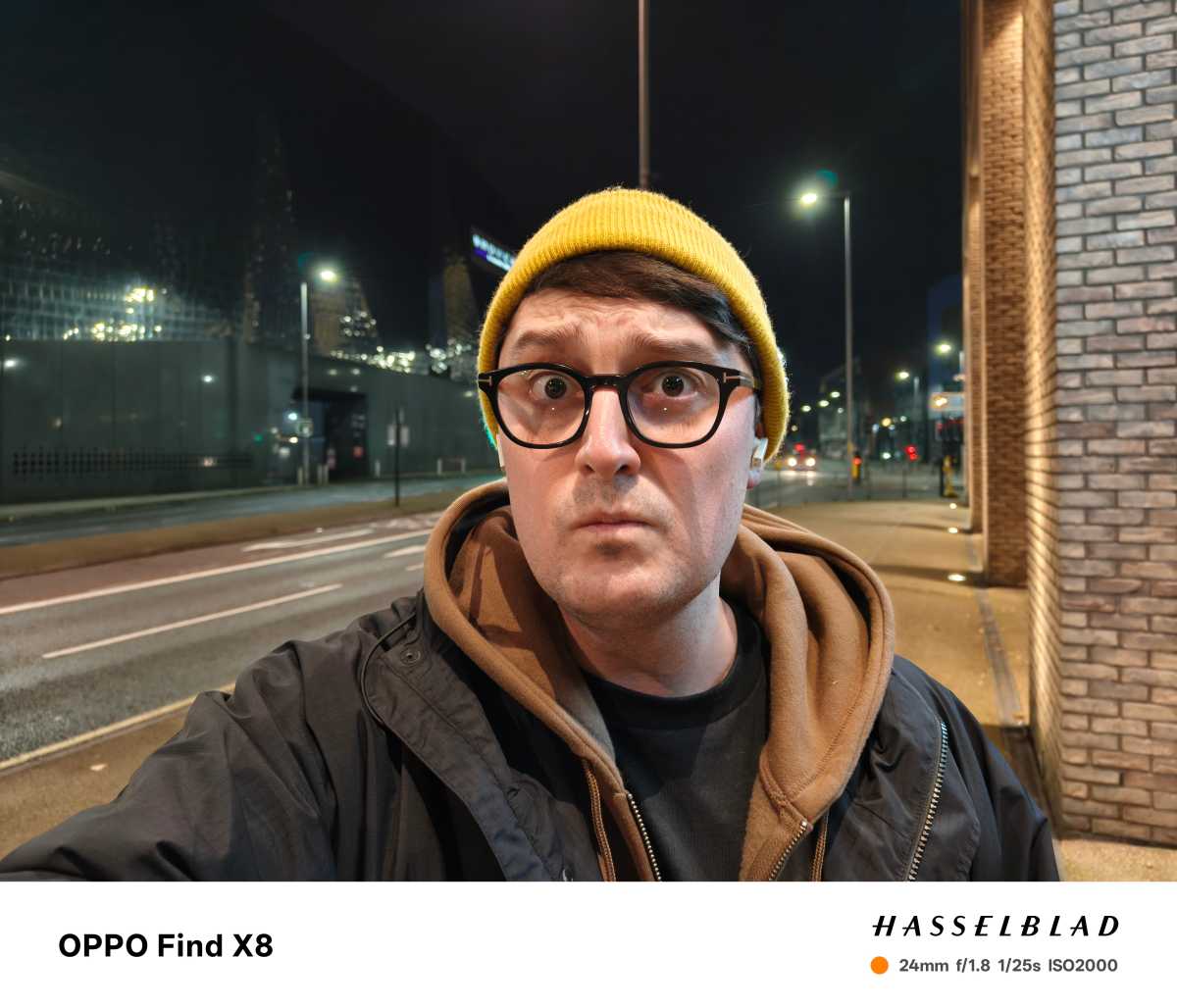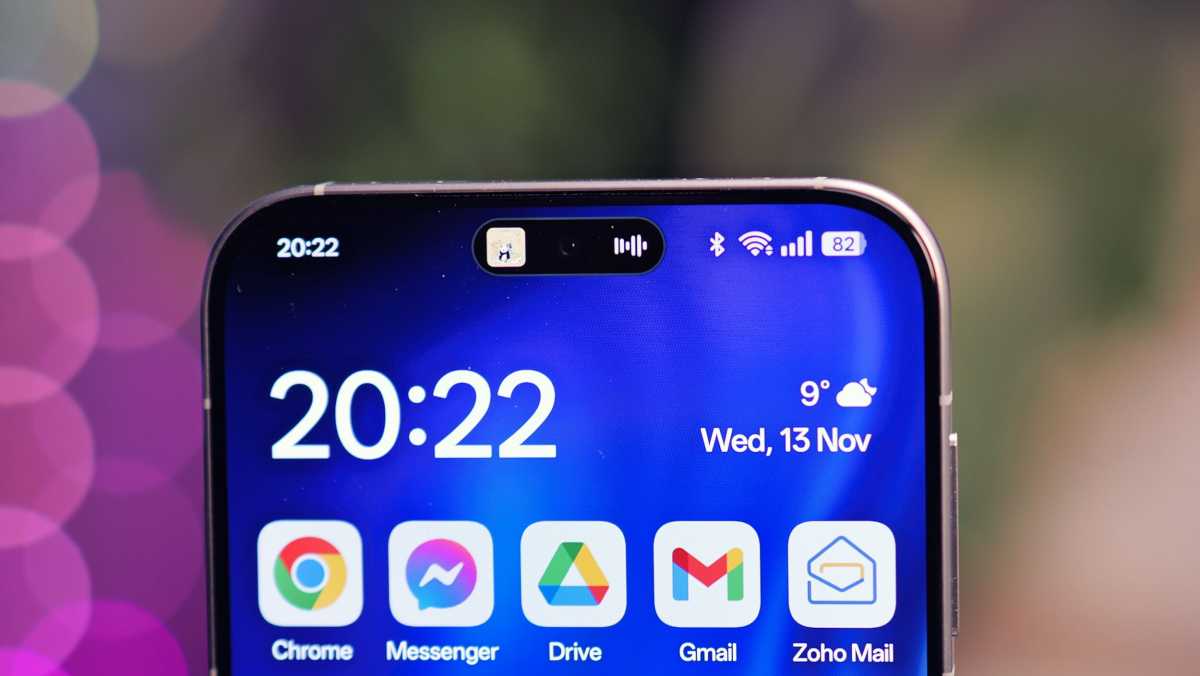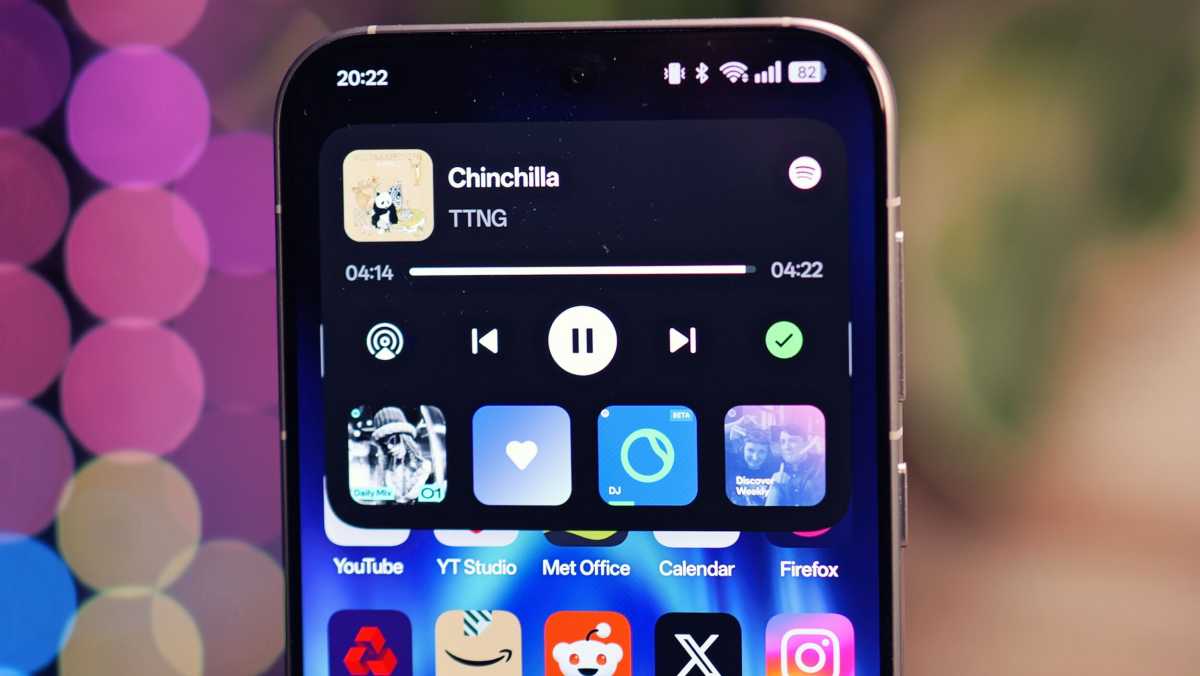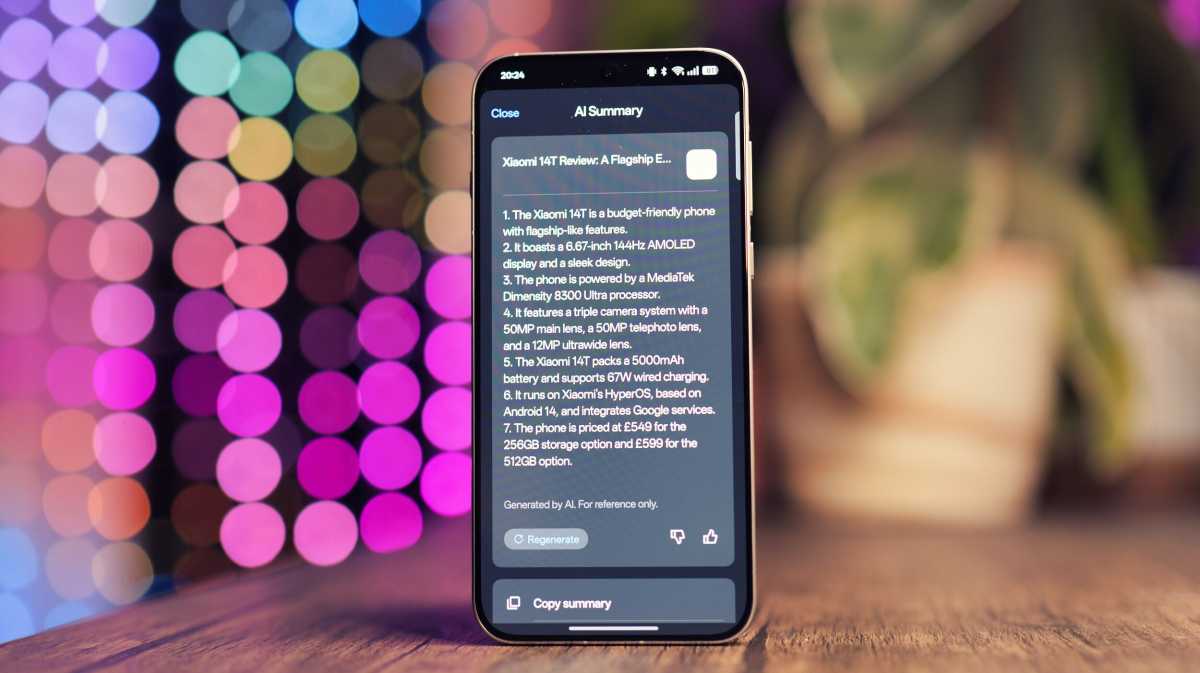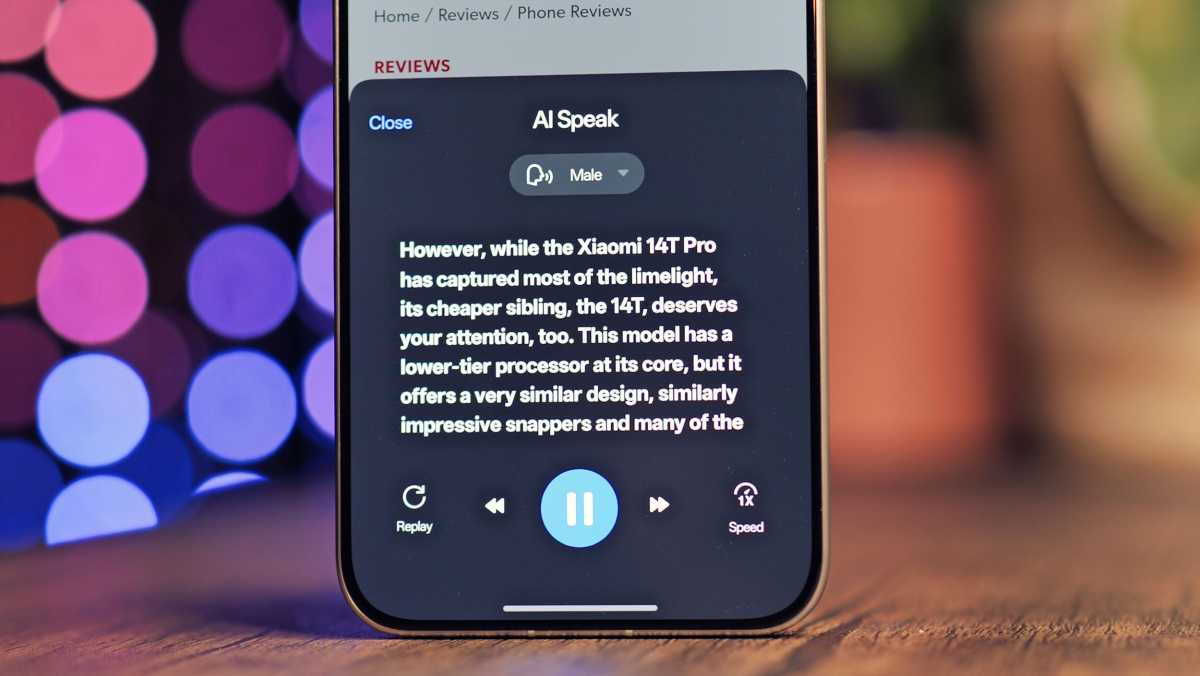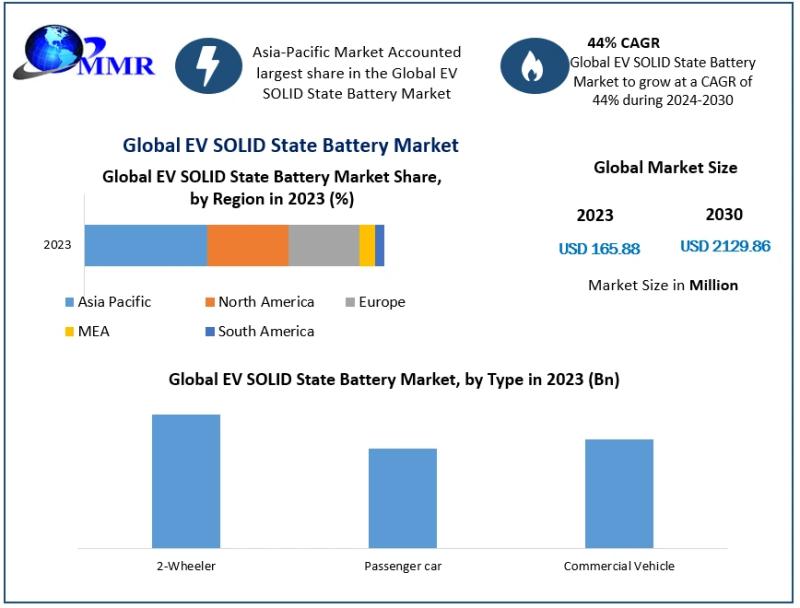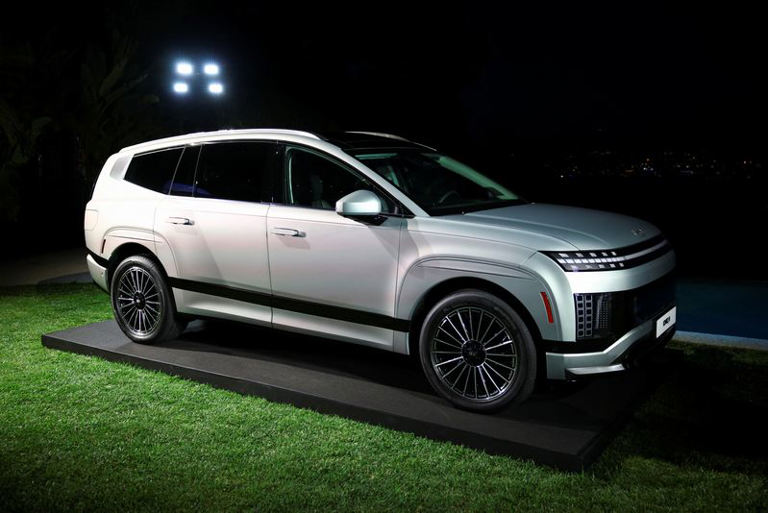Expert’s Rating
Pros
- Slim, pocketable design
- Excellent photography
- Incredibly fast
- Long battery life
- Speedy charging
Cons
- No camera button or 6x telephoto
- Smaller main sensor than the Pro
Our Verdict
The Oppo Find X8 offers a very similar experience to the X8 Pro at a more affordable price. It’s a little smaller in size and it lacks the 6x telephoto lens, but otherwise, they’re very comparable. For a lot of people, this model is the right choice. It’s an excellent all-rounder that easily competes with flagships from the likes of Samsung and Google.
Price When Reviewed
This value will show the geolocated pricing text for product undefined
Best Pricing Today
Oppo’s flagship Find X series has returned to the global market after a few years of absence, and the brand is looking to make a splash. If you want the best of the best, you’ll want to look toward the Find X8 Pro, but if that’s too large (and pricey) for your tastes, the standard Find X8 could be the way to go.
This phone offers a more pocketable form factor but still keeps most of the same specs as its larger sibling. The list includes the powerful Dimensity 9400 processor, a massive battery and speedy 80W charging. The biggest difference is that you only get one periscope telephoto, rather than two.
For a lot of people, the Oppo Find X8 looks like the obvious choice, and its boxy, slimline design only serves to make it more appealing. The question is, what’s it like to live with? I used it as my main handset for the past week in an effort to find out.
Design & Build
- Flat, boxy design
- 193g, Gorilla Glass Victus 2
- IP68/IP69 rated
Despite being the smaller of the two models, the Find X8 is still a fairly large phone. It dwarves my iPhone 16 Pro, and is closer in size to the 16 Pro Max. It is nice and slim, though, with a very minimal camera bump and you’ll notice this every time you slip it in and out of your pocket. It’s significantly lighter than Apple’s top model, too.

Luke Baker
The reason for the iPhone comparison should be fairly obvious. This is Oppo’s most iPhone-like flagship to date, complete with boxy aluminium side rails, and a similar flat glass rear panel with a matte texture. The Apple influence runs more than skin deep, too, but we’ll explore the software features more later on.
This is Oppo’s most iPhone-like flagship to date
This model has a notification slider on the left-hand side, so you can easily silence your phone at any time, and there’s the usual volume rocker and power button on the right. It doesn’t have the new capacitive-touch Quick Button (Oppo’s take on Apple’s Camera Control), you’ll need the Pro if you want to try that.
The phone continues Oppo’s recent trend of making the camera island large, circular, and in the centre of the rear panel. It’s clear that this phone is related to the Find X6 and X7 Ultra that came before, but this time, the bump is slimmer than ever, making it look much less outlandish.
It has the same symmetrical lens layout as its Pro sibling, but only three are actual lenses, and the fourth houses some kind of depth sensor.
This phone also carries the new IP69 rating for dust and water resistance, which means as well as being fully dust and watertight, it can handle sprays from jets of hot water. In reality, this extra layer of resistance is not something that will matter to most users, but it’s ready for whatever you can throw at it.
The haptic motors are strong and precise, which aids in typing and gives some subtle, helpful feedback when zooming in the camera app. They’re not the absolute best haptics I have ever come across, I think Samsung might still hold that honour, but they’re really not far off.
Screen & Speakers
- 120Hz 6.59-inch OLED display
- 4500 nits, 1256 x 2760 resolution
- Stereo speakers
The display of the Find X8 has very similar specifications to the X8 Pro. The main differences are that it’s a little smaller, and it’s completely flat, without the micro curves on the bezel.

Luke Baker
The different dimensions result in a slight change in resolution, but you’d never be able to tell, they effectively offer the same pixel density. You get the same brightness output, too, which means the X8 can peak at an eyeball-melting 4500 nits.
I mentioned in my X8 Pro review that the quad micro-curves have won me over, but I still have a soft spot for a fully flat display, and this one’s particularly well executed. You get razor-thin 1.45mm bezels that are symmetrical on all sides, and the glass sits perfectly flush with the frame, so you never feel it when swiping from the edge of the panel.
I still have a soft spot for a fully flat display, and this one’s particularly well executed.
All the other benefits are present here, too. It supports Dolby Vision playback, has an adaptive 120Hz refresh rate, and produces vibrant and accurate colours that can be easily adjusted in the settings.
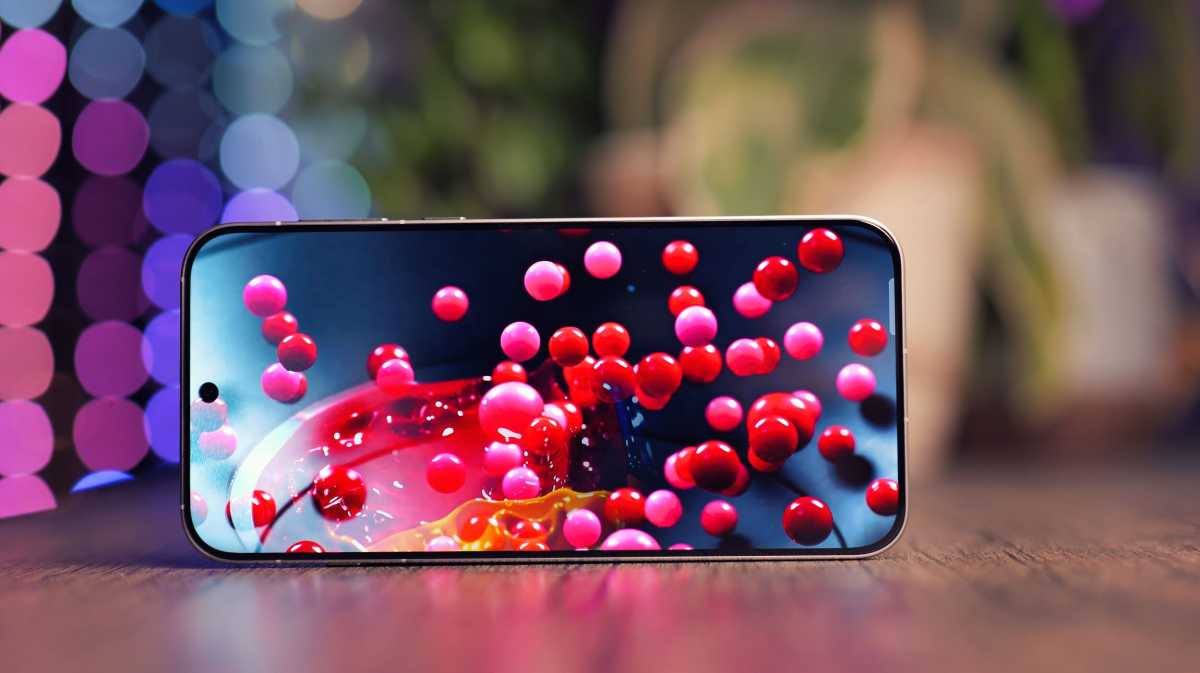
Luke Baker
The stereo speakers sound just as good on this model, too, and they compete with some of the top flagship handsets on the market today. Expect high volumes, loads of clarity, and a little more bass than your average phone.
Specs & Performance
- MediaTek Dimensity 9400
- 12GB / 16GB RAM
- 256GB / 512GB / 1TB storage
The Oppo Find X8 runs on the same Dimensity 9400 processor as its Pro sibling, and my review unit is paired with 16GB of RAM and 512GB of storage. Qualcomm may have a little more street-cred when it comes to high-end chips, but that’s beginning to change, and the latest flagship SoC from MediaTek delivers serious performance.

Luke Baker
The Find X8 achieved one of the highest 3DMark Wildlife Extreme scores I have ever seen, a whopping 6435 points – beating powerful dedicated gaming handsets like the RedMagic 9S Pro and ROG Phone 8 Pro. Of course, this translates to excellent real-world performance too.
The phone feels lighting-quick throughout, some of this can certainly be attributed to the ColorOS animation overhaul, but the sheer power of this device definitely helps. Multitasking, video editing and streaming are a breeze with the Oppo Find X8.
When it comes to games, you’ll struggle to find an Android title you can’t run with high framerates at maximum graphics settings, and it does well with emulation too, if that’s your kind of thing. It can get a little toasty when you’re pushing the limits, but it never gets concerningly hot, and performance doesn’t seem to drop too dramatically during longer sessions.
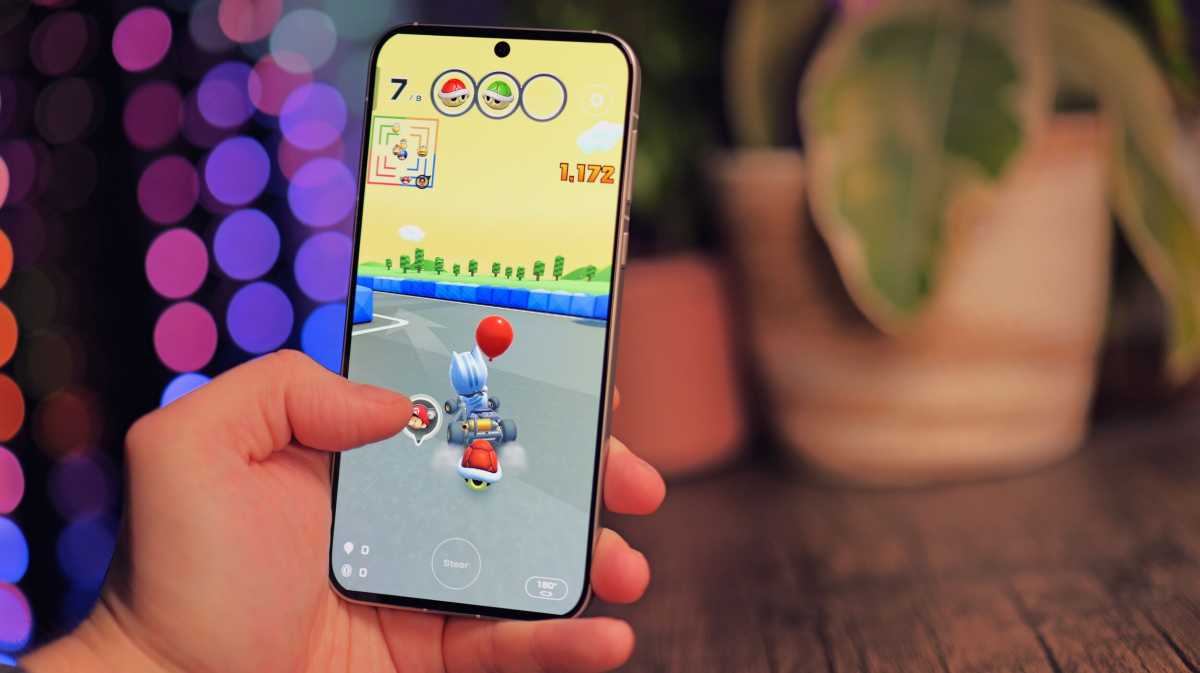
Luke Baker
If you’re looking to get the competitive edge, the Find X8 has a built-in game overlay with quick access to performance modes, messaging, media controls and notification blocking. It’s essentially the same as the overlay that came with ColorOS 14, but it has everything you’re likely to need.
Cameras
- 50Mp main sensor, 1/1.53-inch
- 50Mp ultrawide, 1/2.75-inch
- 50Mp 3x telephoto, 1/1.95-inch
- 32Mp selfie camera, fixed focus
At a glance, the camera array on the Find X8 looks very similar to the Find X8 Pro, but there are two main differences. The first is that you get one less camera, there’s no 6x telephoto on this one, and the second is that the main camera has a different sensor.
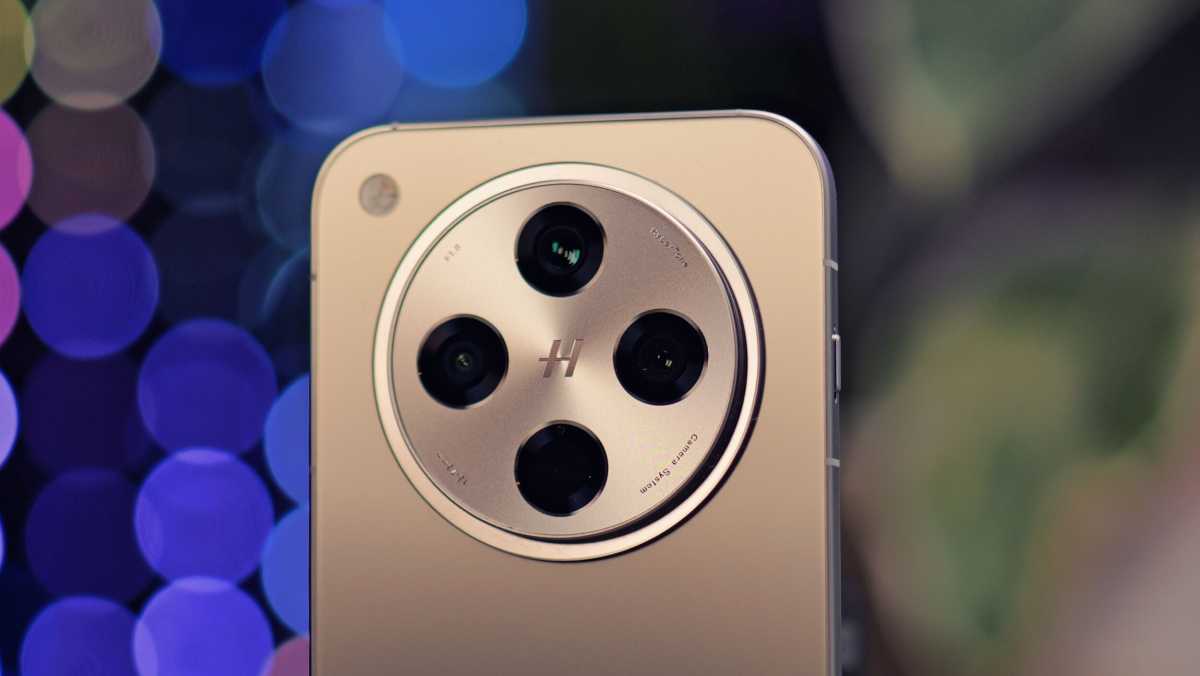
Luke Baker
It’s a smaller 1/1.53-inch unit, rather than a 1/1.4-inch sensor on the Pro. In theory, this should mean slightly worse performance in low light conditions and less natural background blur. However, in practice, the difference is subtle. In the day, the two cameras look nigh on identical, and at night, you might need a slightly longer exposure, but your results will be very similar.
The ultrawide and 3x telephoto share the exact same specifications as the X8 Pro, and so the resulting photos are indistinguishable.
The ultrawide is the weakest lens of the trio. It lacks some detail compared to the other two units, and it struggles with noise and motion blur in dark conditions, but that’s usually the case with ultrawide cameras. It’s still a very useful focal length to have, and it has autofocus, so it can pull double duty as a macro shooter.
The 3x telephoto is just brilliant. It’s a relatively large sensor, for a telephoto, and this means you get some nice natural compression to your shots, which makes them look a lot less like smartphone photos. The 73mm equivalent focal length is great for street snaps, too.
you get some nice natural compression to your shots, which makes them look a lot less like smartphone photos
I do wish the minimum focus distance was a little closer, this focal length would be great for tele-macro shots, but that’s sadly not an option. Instead, the camera app wants to switch you to the ultrawide-based macro mode sooner than you might expect.
Despite lacking a 6x telephoto, this system still performs well beyond its optical zoom range, and you can get very usable images up to around 10-15x zoom. Surprisingly, it offers up to 120x, just like the Pro, but it heavily relies on AI processing when you’re zoomed that far. The results look impressive, but they’re not very accurate, as the AI is just guessing and inserting imaginary details.
The selfie camera is the same as the one on the Find X8 Pro, too. It’s a solid performer, and the only real weakness is that it lacks autofocus, so if you’re not standing in the sweet spot, your images won’t be as sharp as they could be. Still, it’s capable of great results, and impressive portrait mode effects help matters further.
All the other camera benefits that come with the Pro are also present here. This includes lightning-quick capture, full-quality burst shooting at 7fps and super reliable autofocus with eye detection. It’s brilliant for capturing fast-moving subjects.
The same goes for video features. You can shoot at up to 4K 60fps on all lenses, with great stabilisation, solid audio and Dolby Vision capture. You’ll also be able to use the Blackmagic Camera app in the near future, if you’re craving some more professional control options.
Battery Life & Charging
- 5630mAh battery
- 80W wired charging
- 50W wireless charging
The Oppo Find X8 uses the latest silicon-carbon battery innovations to squeeze a 5630mAh battery into its svelte chassis. It may not sound massive next to the Pro’s 5910 mAh pack, but when you consider that most flagships are still rocking 5000mAh (or smaller) capacities, it’s a very generous size.
I found that the X8 typically lasted just as long as the Pro model with real-world use, possibly owing to the slightly smaller display. With light use, you can quite easily go for two days on a charge. You’ll have to be a seriously heavy user to drain it in a day, and more often than not, I went to bed with 40% or more left in the tank.
You’ll have to be a seriously heavy user to drain it in a day
When it’s time to plug in, you’ll be back up and running in no time at all. It supports up to 80W charging with a wire and 50W with Oppo’s AirVooc wireless charger.
My sample came with the 80W wall adapter included, but that won’t be the case in a lot of regions. So, if you want to take advantage of the top speeds, you’ll likely need to shell out some additional cash for a SuperVooc charger.

Luke Baker
Third-party adapters won’t hit the maximum advertised speed, but they’ll still charge the phone very quickly. It supports up to 50W using the USB C Power Delivery standard.
Software & Apps
- ColorOS 15, based on Android 15
- AI features and Circle to Search
- Some bloatware
The Oppo Find X8 runs ColorOS 15, Oppo’s freshly tweaked version of Android 15, delivering an identical experience to its Pro sibling. Oddly, my review unit seems destined for the Russian market, as a lot of the preinstalled apps are Russian, but that won’t be the case with retail units – unless you’re in Russia.
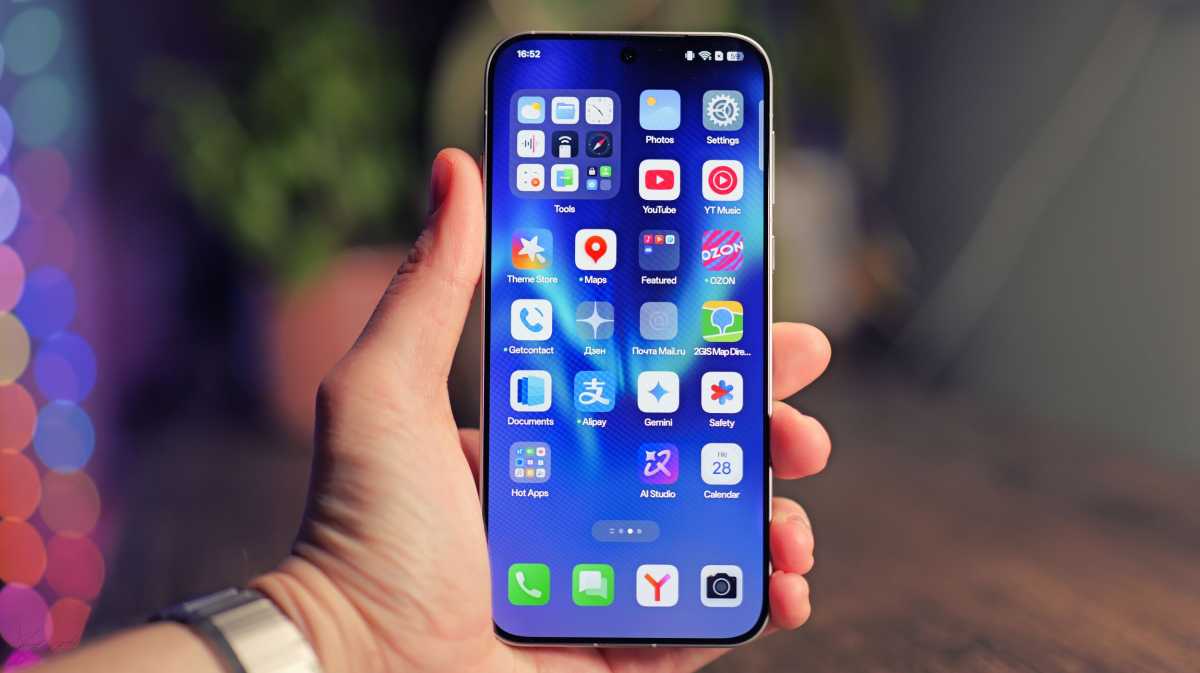
Luke Baker
Oppo has been hard at work optimising its software for this release and the results are immediately apparent. The Find X8 series feels noticeably snappier than previous Oppo handsets, apps open almost instantaneously and swiping around the OS is a smooth, stutter-free experience.
The Apple influence is more noticeable than ever with this release, and while it might divide opinions, I’m a fan of everything Oppo has added to ColorOS 15.
There’s a new Dynamic Island-inspired bubble that pops up around the camera cutout and it gives you quick access to things like media controls and hotspot status. It’s really convenient to access, as it displays over other apps, and I’m pleased to see more Android brands copying one of Apple’s finest features.
You can now split your notifications and quick settings shade to be accessed with swipes from different sides of the display. Again, it’s very Apple-like, but it’ll also feel more comfortable for those coming from a Xiaomi, Huawei or Honor device. The best part is that it’s completely optional, and if you want the traditional stacked layout, you can have it.
The phone also comes with Circle to Search and has Google Gemini as the default assistant, so you’re all set up with Google’s latest features from day one. Earlier in the year, this would have been a major selling point, but it seems like almost every brand is adopting these features now. In any case, they’re both great, and I’m pleased to see them included.
As you might expect, Oppo has injected plenty of AI features into the latest version of its OS. There are all the usual tricks, like AI writing assistance, summaries and translation, as well as image editing tools like an AI eraser, clarity enhancer and reflection removal.
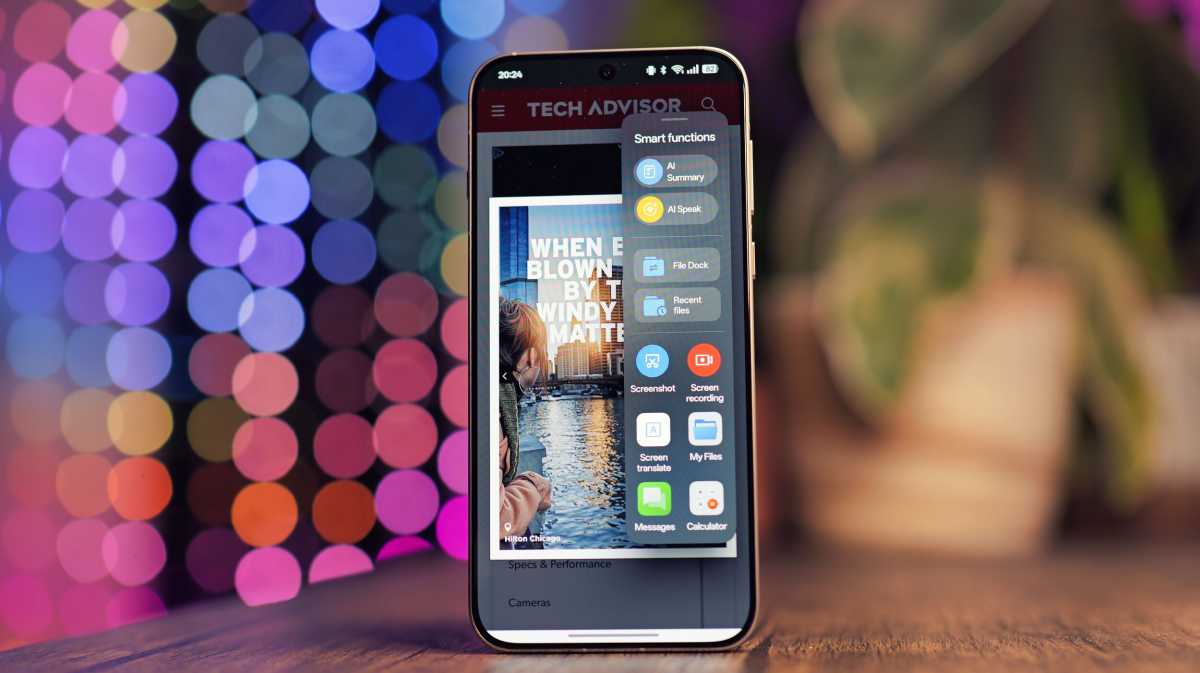
Luke Baker
I just don’t find myself using most of them, and that’s not an Oppo problem, it’s the same across all brands. However, there are two big exceptions built into ColorOS, and I like them so much that I’m almost dreading switching to another phone.
They’re called AI Speak and AI Summary. These tools can look at any webpage, regardless of your browser choice, and either read it aloud in a very natural-sounding voice or summarise it with concise bullet points. I’ve been using these all the time, they’re extremely handy when you need to learn about a topic but don’t have time to sit and read a long article.
The biggest downside is the sheer amount of bloat that comes preinstalled. Thankfully, the OS lets you select apps in bulk, and that makes cleaning it up nice and quick, but it’s a hassle that shouldn’t be present on a premium handset like this.
Both the Find X8 and Find X8 Pro benefit from extended software support. Oppo promises to deliver the latest security patches and Android updates from now until 2030. It’s not quite as long as Samsung or Google, but it’s an improvement, and I’m happy to see things moving in the right direction.
Price & Availability
We haven’t been given exact pricing for the Oppo Find X8, but based on the Indonesian pricing, we expect it to cost around £699 in the UK, and that’ll get you 12GB of RAM and 256GB of storage. There’s also a variant with 16GB of RAM and 512GB of storage available at a higher price, likely £799.
The phone will be available from Oppo’s website but it hasn’t appeared just yet. If you pick one up, be sure to check out our guide to the best SIM only deals. It’s also likely to be available on contract, but we don’t have the details on that just yet,
At this price, the Oppo goes toe-to-toe with top-notch devices like the Samsung Galaxy S24 (£799), Apple iPhone 16 (£799) and Google Pixel 9 (£799). Despite the formidable competition, though, the Oppo Find X8 stands out as a great option, particularly if you’re a photography fanatic.
Should you buy the Oppo Find X8?
I loved the Oppo Find X8 Pro, so it’s no surprise I also love the standard Find X8. This model offers a very similar overall experience, and for a lot of people, it’s probably the sensible choice. To summarise the differences: The X8 has a flatter boxy design, a slightly smaller screen, main camera sensor and battery, and it lacks the 6x lens and camera button.
I use the 6x telephoto quite frequently, and I also enjoy the novelty of the dedicated camera button, so for me, the Pro is worth the extra outlay. However, I don’t think that’s the case for everyone, and the Quick Button is far from an essential upgrade. As for the difference in screen size and battery life, the difference is so small that I don’t think it should factor into the equation.
The top-notch hardware is one thing, but the Oppo Find X8 also delivers on the software front. ColorOS 15 is the fastest and most polished-feeling OS from the brand so far. It offers great customisation options and has AI features that you might actually use. The only downside is a bit of bloatware to clean up.
If you’re looking for top-of-the-line photography, blazing fast performance and long battery life the Oppo Find X8 does it all for a reasonable price. It’s a compelling alternative to mainstream flagships like the Samsung Galaxy S24 and Google Pixel 9, and it’s very easy to recommend.
Specs
- ColorOS 15, based on Android 15
- 6.59-inch, 1256 x 2760, OLED, 120Hz
- In-display fingerprint sensor
- MediaTek Dimensity 9400
- 12GB / 16GB RAM
- 256GB / 512GB / 1TB storage
- Camera:
- 50Mp main sensor
- 50Mp ultrawide
- 50Mp 3x telephoto
- 32Mp selfie camera
- Up to 4K @ 60fps rear video
- Stereo speakers
- Dual-SIM
- Wi-Fi 802.11 a/b/g/n/ac/6/7
- Bluetooth 5.4
- 5630mAh battery
- 80W charging
- 157.4 x 74.3 x 7.9 mm
- IP68/IP69 certified
- 193g
- Colours: Star Grey, Space Black, Shell Pink

